Photo excursion to the museum of the central telegraph

At the invitation of Albert Valiullin, director of coworking marketing at DI Telegraph , he visited one of the most inaccessible places in Moscow that the blogger had not yet set foot on. Immediately sorry for the pictures - shot on a matchbox, but the exhibits were worth it!
Before talking about the Telegraph, it should be agreed that this is retrocomputing. All human inventions are essentially trivial: the atomic bomb or rocket to the moon are self-evident at the level of the idea. In the end, the steam engine has been known since antiquity. But in order to really build a locomotive, it will take five hundred years of engineering culture.
')
The same parsley with computers. The person with the Internet always needed a person, and each culture solved this problem in its own way. For example, the Library of Alexandria is quite a Wikipedia and “Internet on scrolls”. What is a university? In fact, retrocomputing, where students independently dig data, write coursework and draw presentations. Only each component of this computer occupies a separate building.
In Moscow there is a whole class of such buildings-functions.
For example, a house is a hard disk.
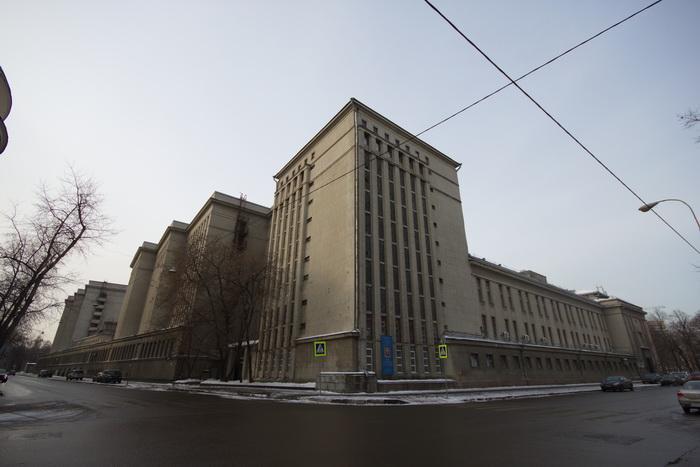
The central archive of ancient acts on Pirogovskaya.
Here is the house-internet.

All-Union Library of Foreign Literature at Nikoloyamskaya.
But - the video card is overheated.
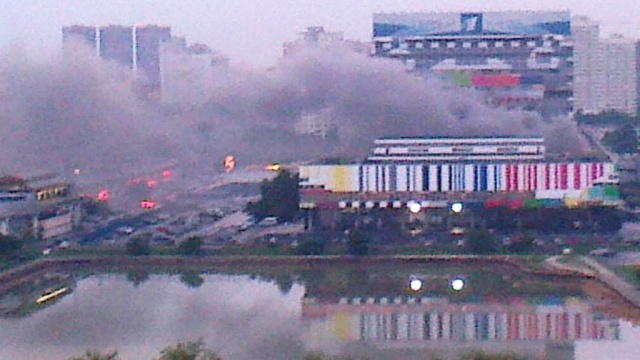
Fire at the 2013 Ostankino television station.
A special place in this row is the house-modem, or house-router, if you want.

Central Telegraph is the oldest telegraph in the world (!). It was built its modern building with the maximum socialist scope, that is, extremely rational and the latest technology. In addition, it was built by pre-revolutionary trophy specimens. It turned out to be a communal house with a closed ecosystem - besides the spacious machine rooms here there was all its own, from forges to kindergarten for two hundred people.
Or here are the balconies: have you ever wondered where they are from in a technical building?
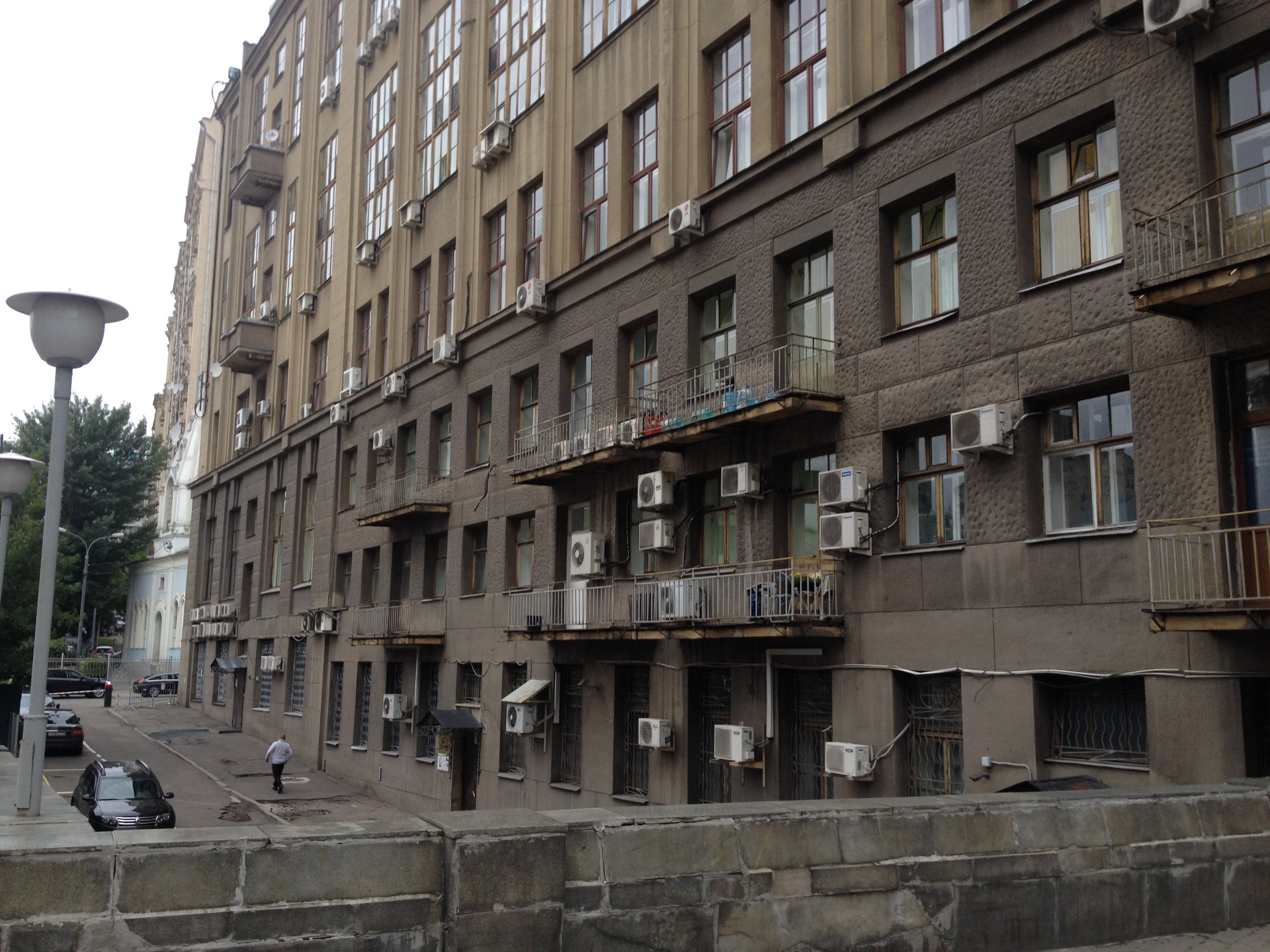
And there were 20 apartments for the authorities in the building, and the telegraph director had his own elevator - from the apartment immediately to the production site.
A talented Russian engineer, Ilya Rerberg, designed the building with the latest technology. Together with Shukhov, Rerberg pioneered the use of monolithic reinforced concrete frames - their use made it possible to completely abandon the walls in favor of panoramic glazing. And the strength of the structures was always laid with a margin (for example, the telegraph was built with the possibility to complete two more floors. This was planned to be done by the 1980s, but calculations showed that for the needs of the Olympiad it would be necessary to double the available areas - so the new telegraph building appeared).
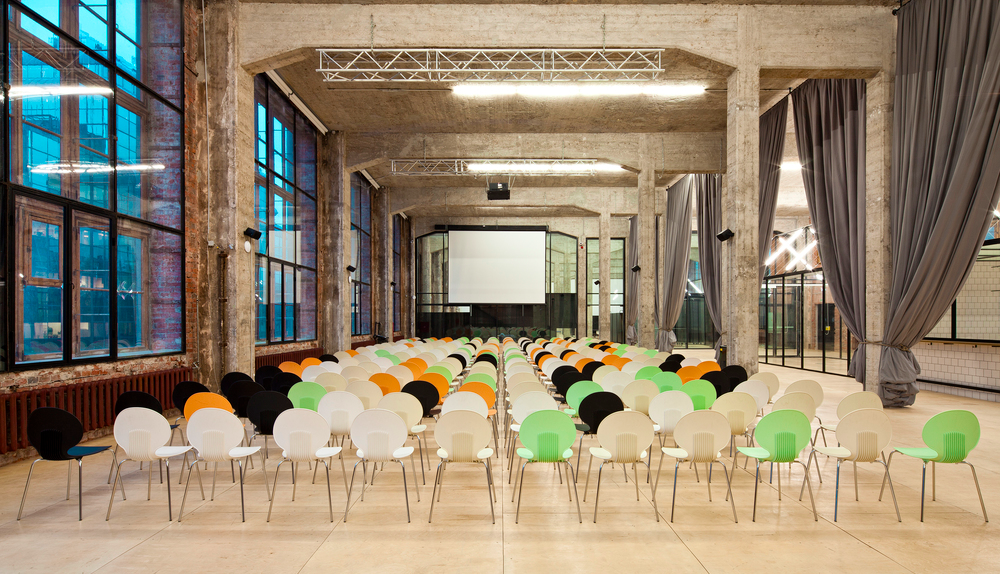
Even now the telegraph continues to perform its functions as the central hub of all types of communications in Moscow. Progress cleared the machine rooms, turning them into restaurants, offices and a huge co-working, but the Central Telegraph itself is still a strategic object, which can be reached only with the permission of the director.
So I came to visit the director of the museum of the central telegraph - Vladimir Tsukor. I must say that I have never met a man so obsessed with his work. I spent about five hours in the museum, and it was clear that you could spend a whole month here. At the same time getting to the museum from the street is simply impossible. And there is something to see here.
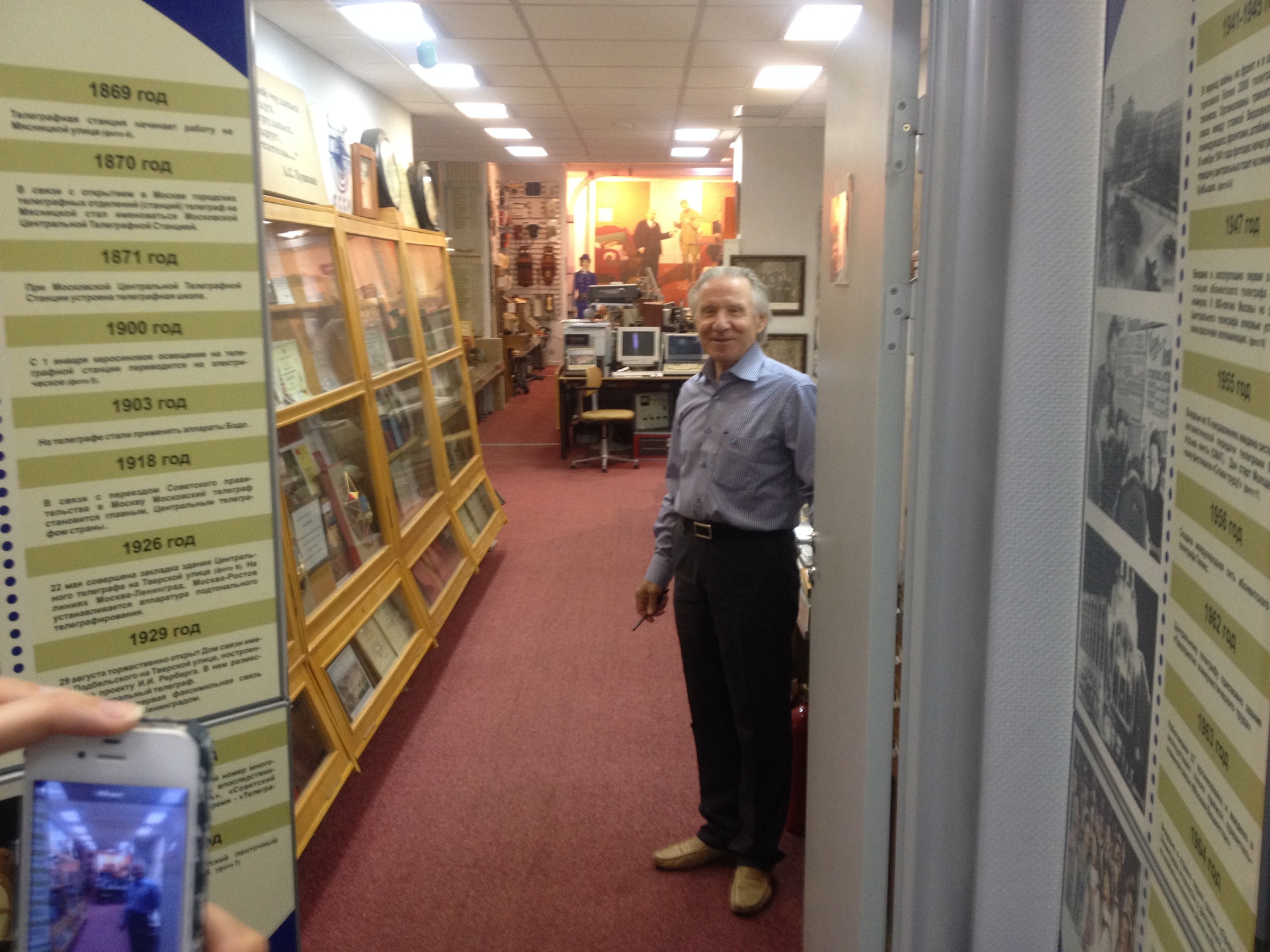
In fact, this is not quite a museum, rather a collection, and all the exhibits in it are active. The museum staff seriously set themselves the goal to collect the existing models of all known communication devices. And already quite succeeded in this.
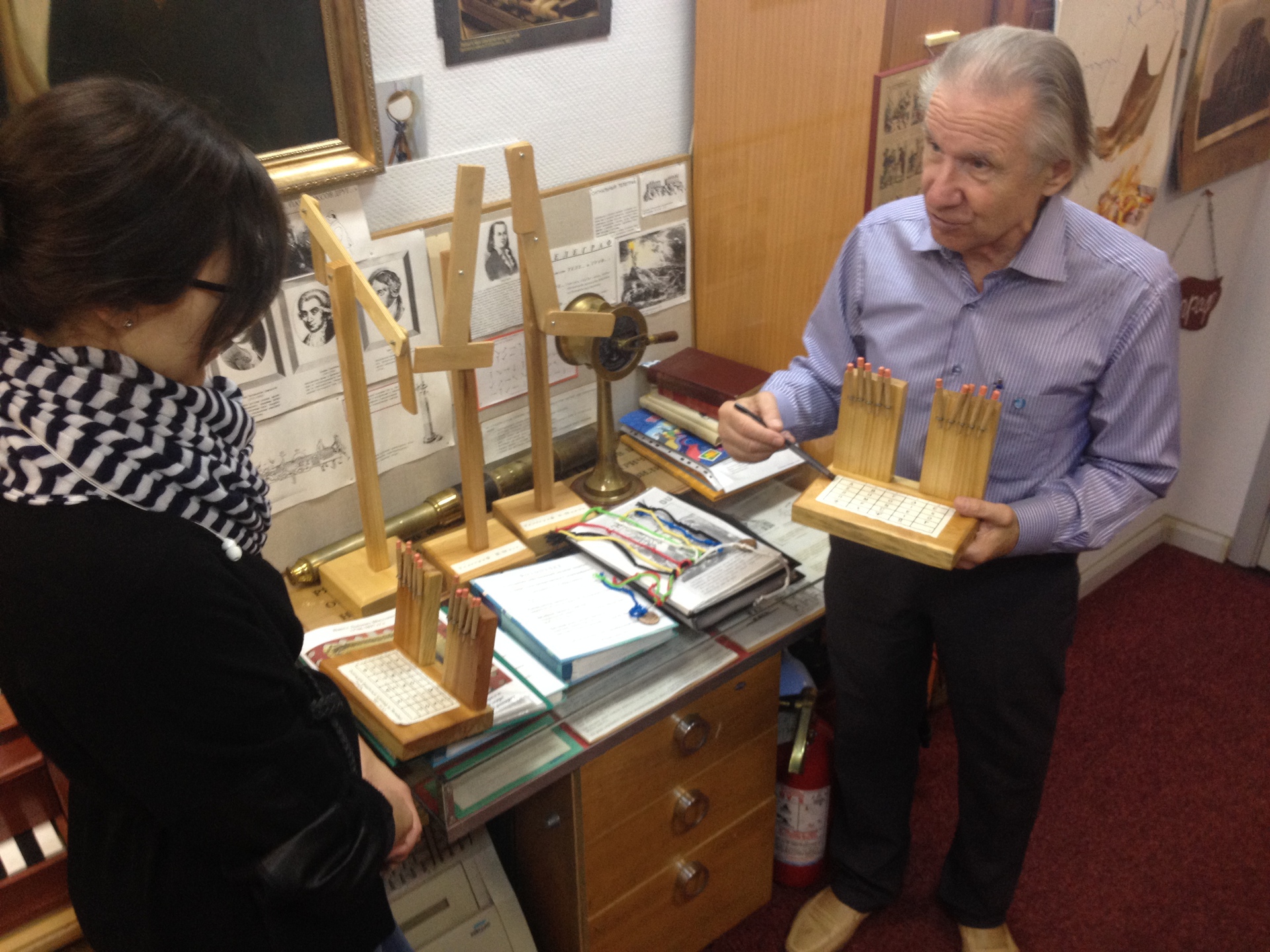
Here is the very first telegraph that reached us - a torch device from ancient Greece. Torches are networked and transmit a message along the chain - from the military lines to the capital.

The device, as you can see, is extremely simple - ten torches set the row and column in the code table.
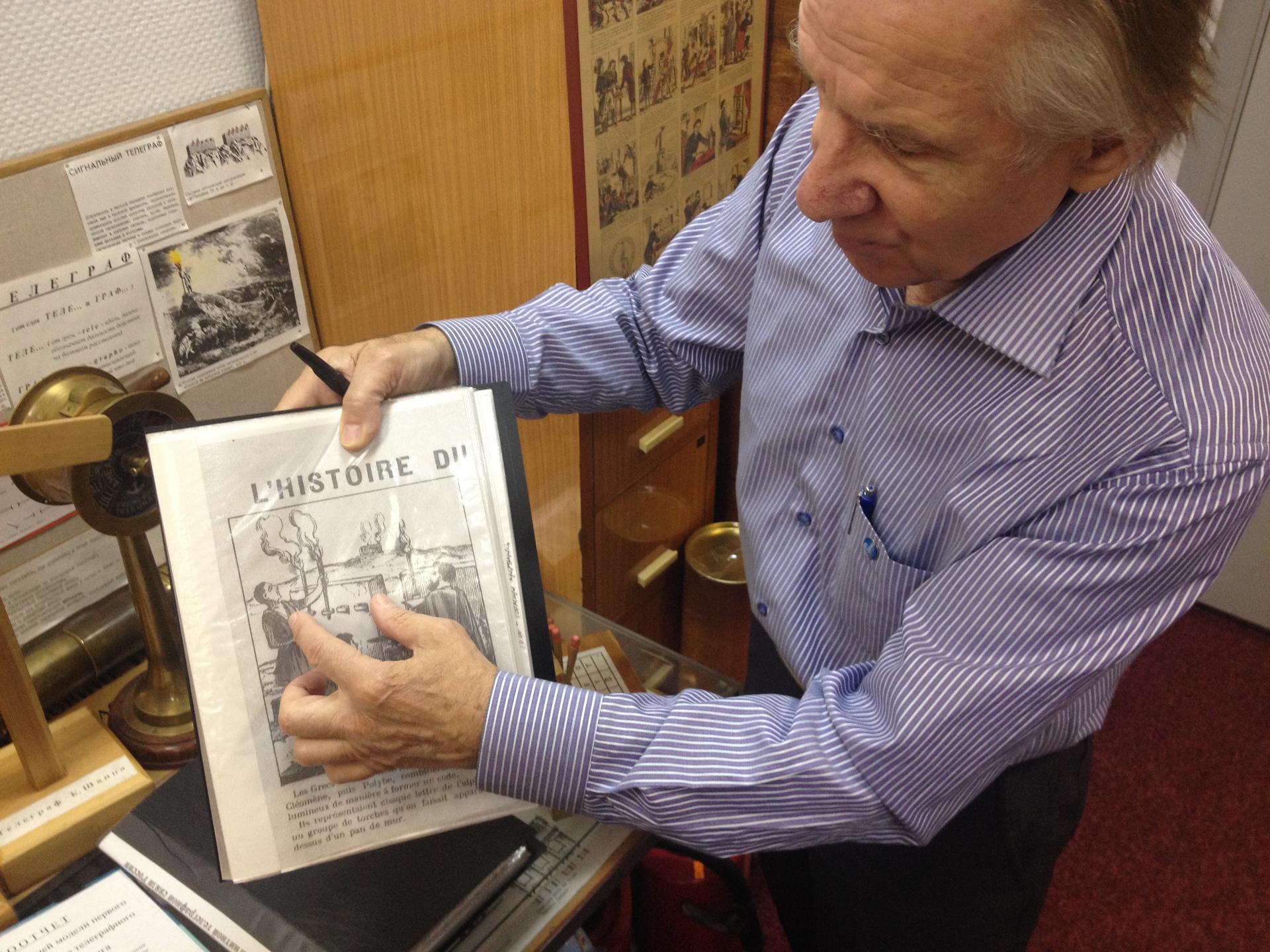
Here is how it looked in practice.
After antiquity came the dark Middle Ages, and religion replaced the need for communication in people. That was until 1792, when Claude Chappe created an optical telegraph system.

The code table contained as many as 77 characters.

The transfer rate is 2 words per minute. We got a little less.
When I said that fans of their work work in the museum, I didn’t exaggerate - they know by name every telegraph station and even calculated the signal speed in all directions. Such a speed of communication, for example, allowed Napoleon to have a decisive advantage over the enemy and win a number of victories.

A good story is connected with the appearance of this telegraph in Russia. In 1824, a communication line was built from the winter palace to Kronstadt. At the same time the technology will be significantly improved. Firstly, the telegraph can now work at night, and secondly, it does this many times faster by simplifying the code.
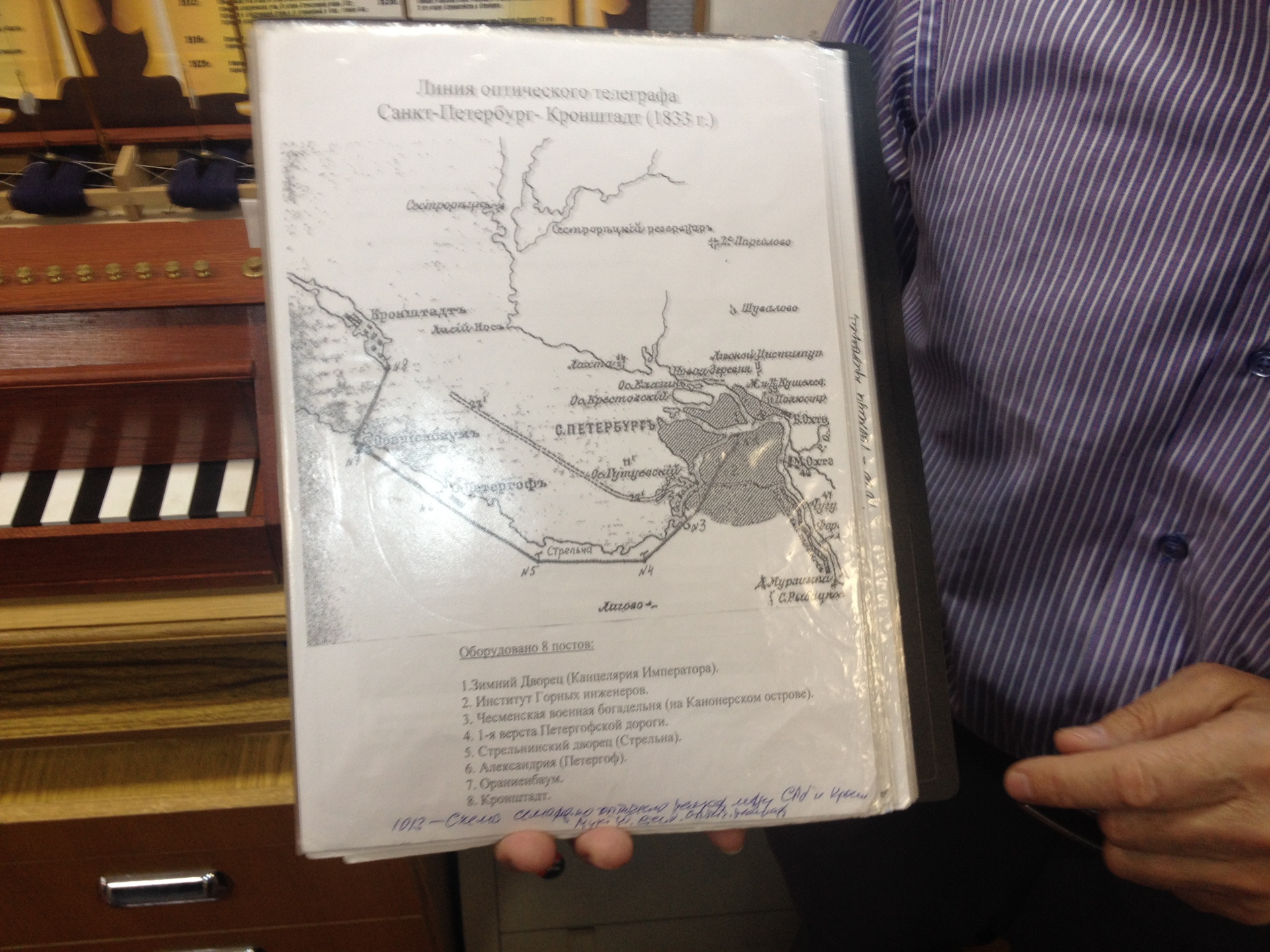
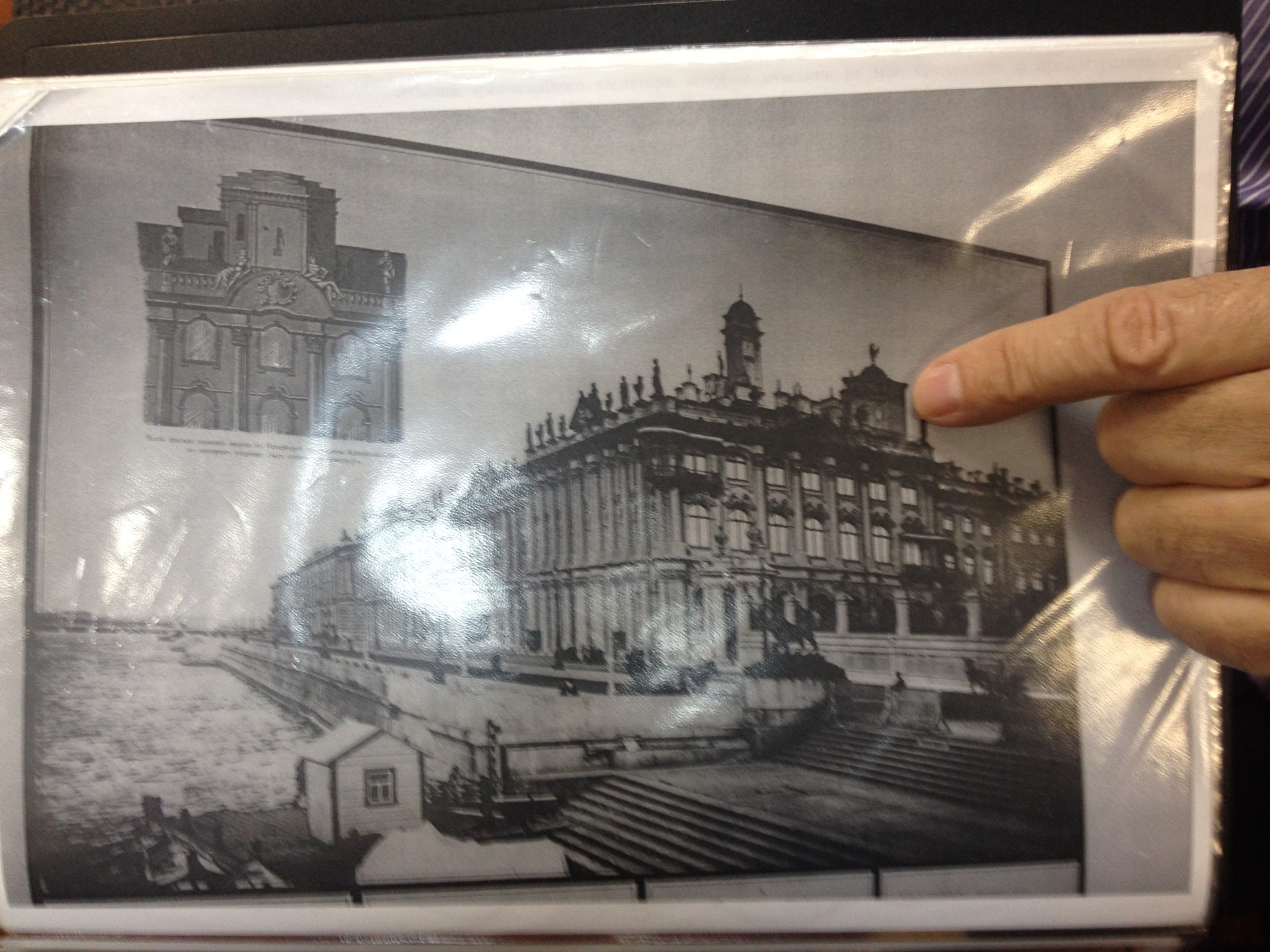
On the roof of the Winter can still see the tower of the optical transmitter.

An optical telegraph, developed by a former employee of C. Chapp - engineer Jacques Chateau (in Russia they called him Peter) was chosen for construction in Russia. The design of its telegraph is much simpler than that of Chapp: for visual transmission, only one “semaphore rod” was used, resembling a T-shaped arrow, at three ends of which lanterns were lit at night. The arrow could rotate and assume eight different fixed positions. In their combinations, individual letters, numbers and whole phrases are encoded.

At the intermediate tower stations, in a special journal, the “signalist” recorded all signals received and transmitted, indicating the transmission time and his name. In this case, only the numerous positions of the semaphore rod were recorded (as a sequence of drawings). The telegraph operator, while transmitting, simply repeated the positions of the rod on his tower, copying the positions of the rod of the transmitting tower, which he observed through a telescope. The content of the message he did not know.
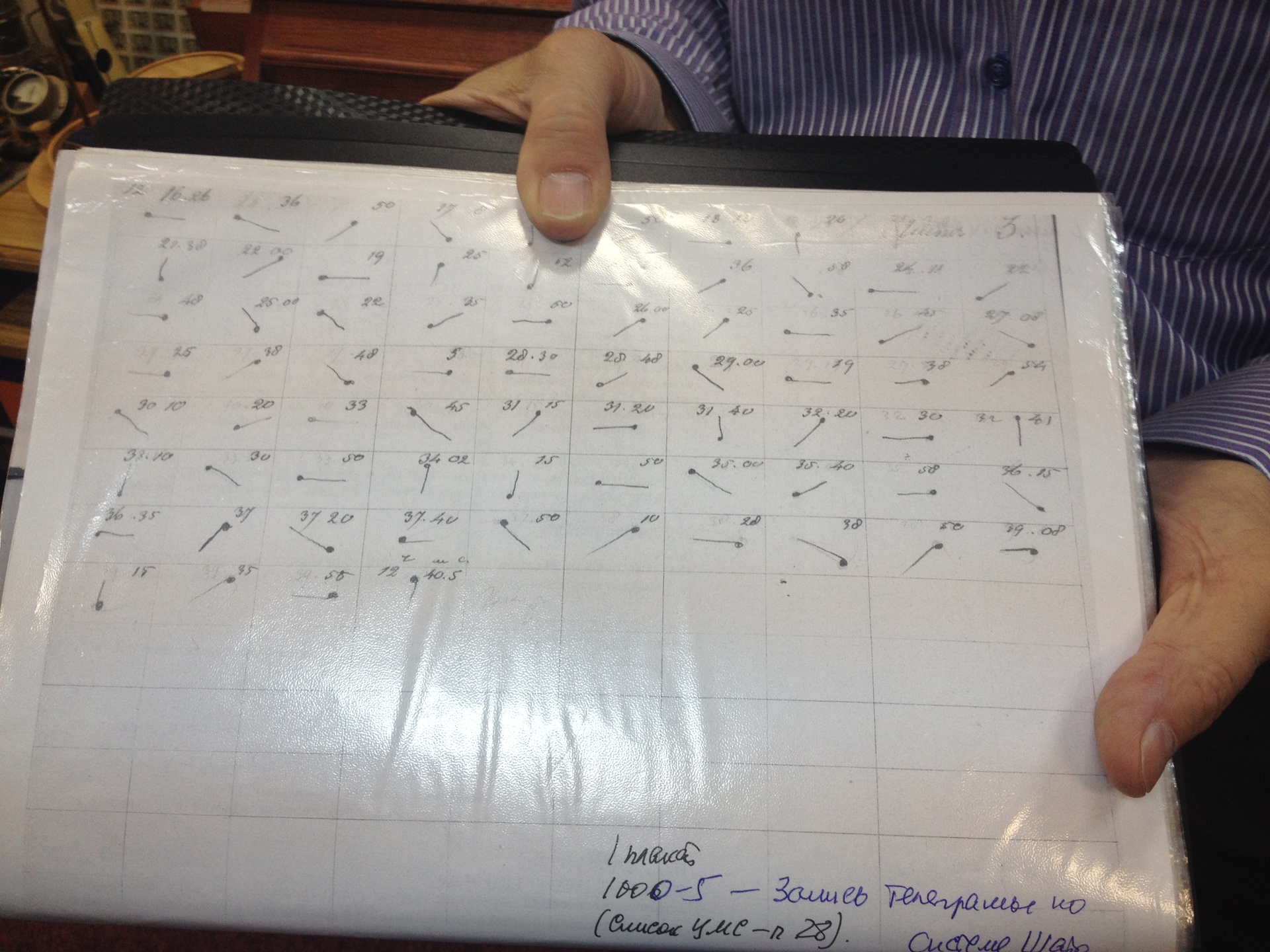
However, “self-indulgence" quickly ended, in 1832 the Petersburg engineer Pavel Schilling demonstrated the world's first electric telegraph. Too zamorochennaya design, which has not received distribution.
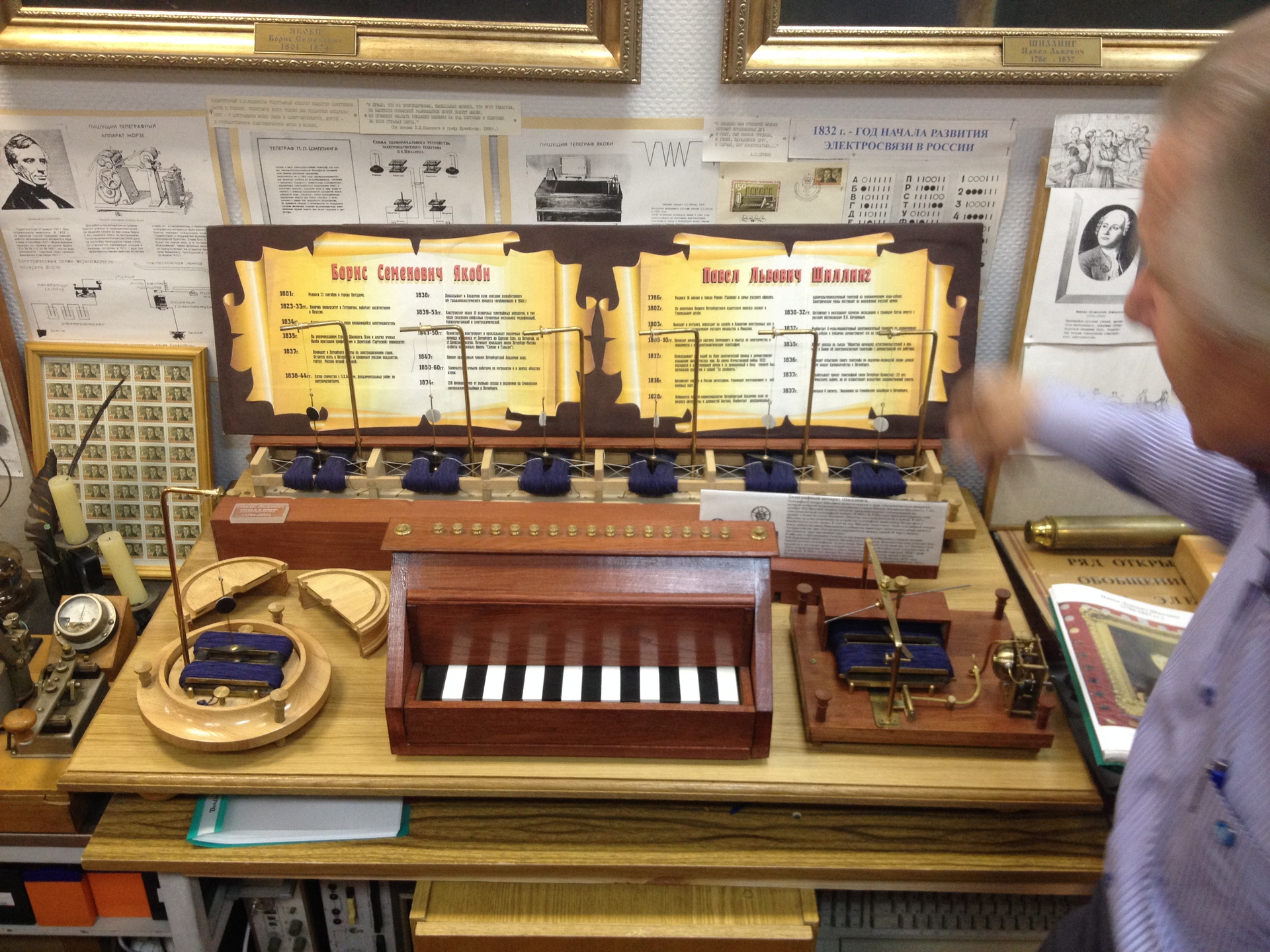
Coils of copper wire through magnetism turned the circle in one of three positions - white, black and edge.

The operator at the other end of the wire recorded the turn of the pointers and decoded the message. Six reels, one keyboard, plus a bonus reel on the right.

She was the most important one, because she gave a call notifying the operator that it was time to return to the site and begin receiving the telegram.
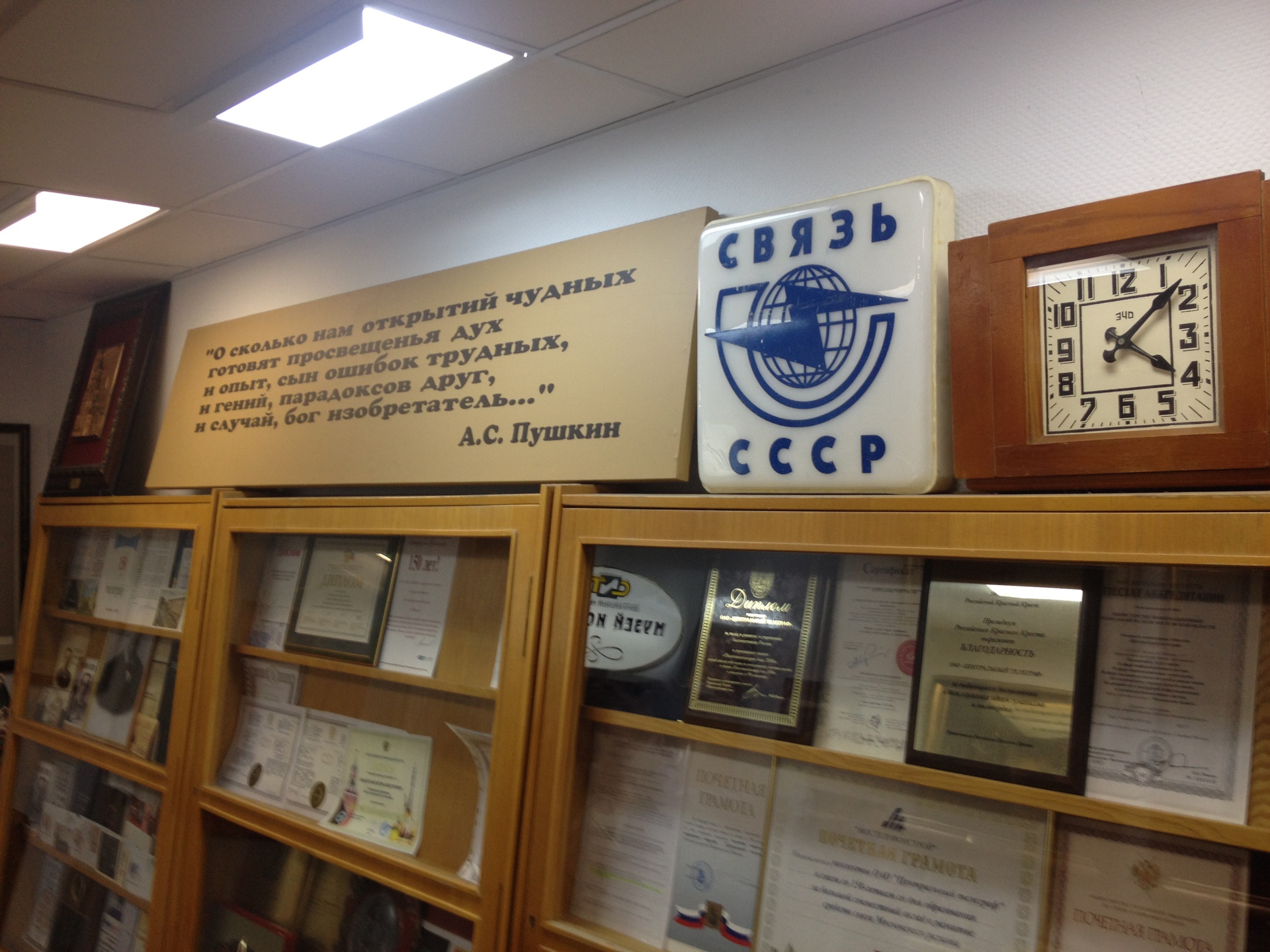
They say that Pushkin devoted these lines to his friend Schilling, implying his telegraph.
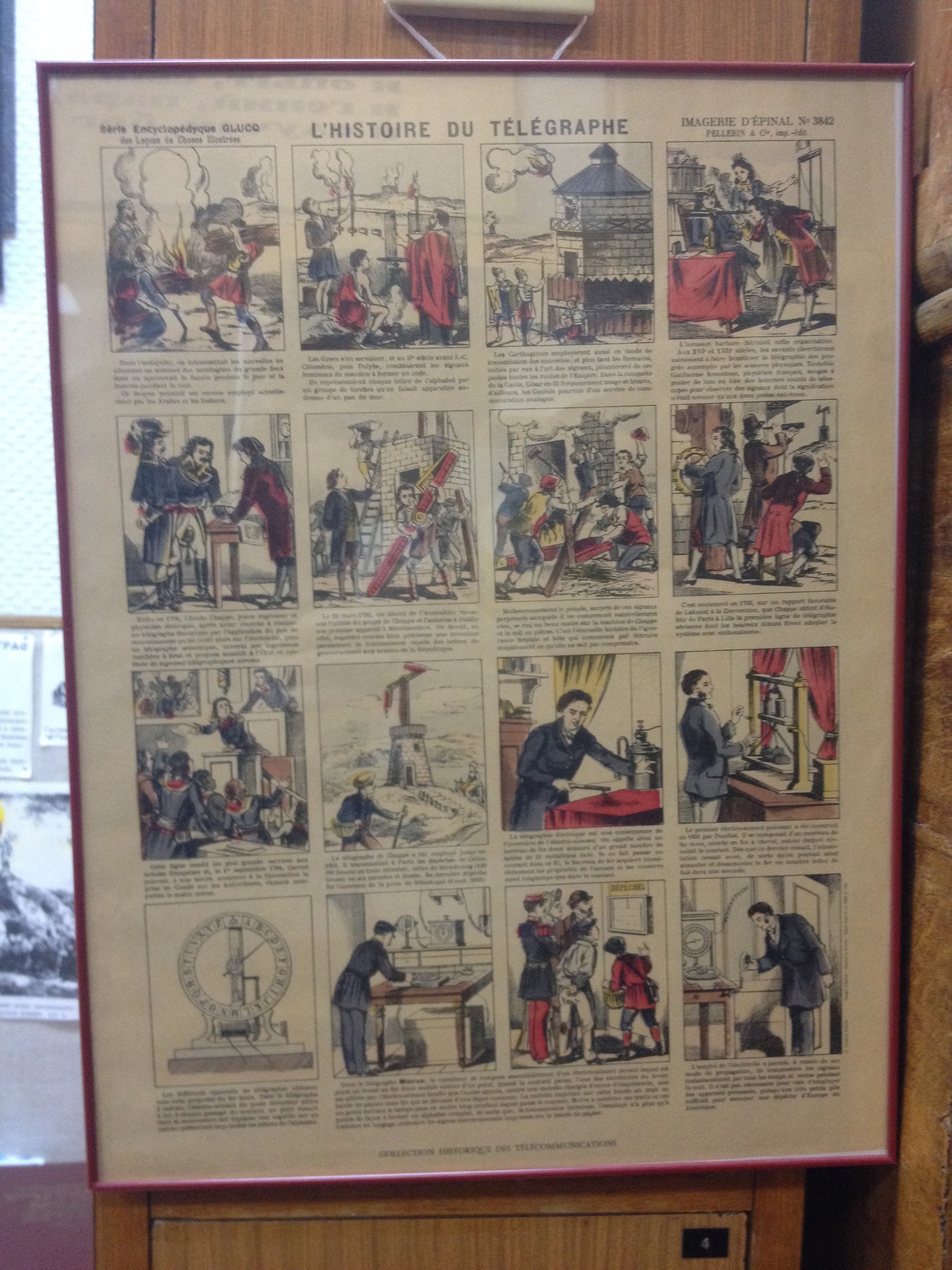
All of the above in the form of a comic book.
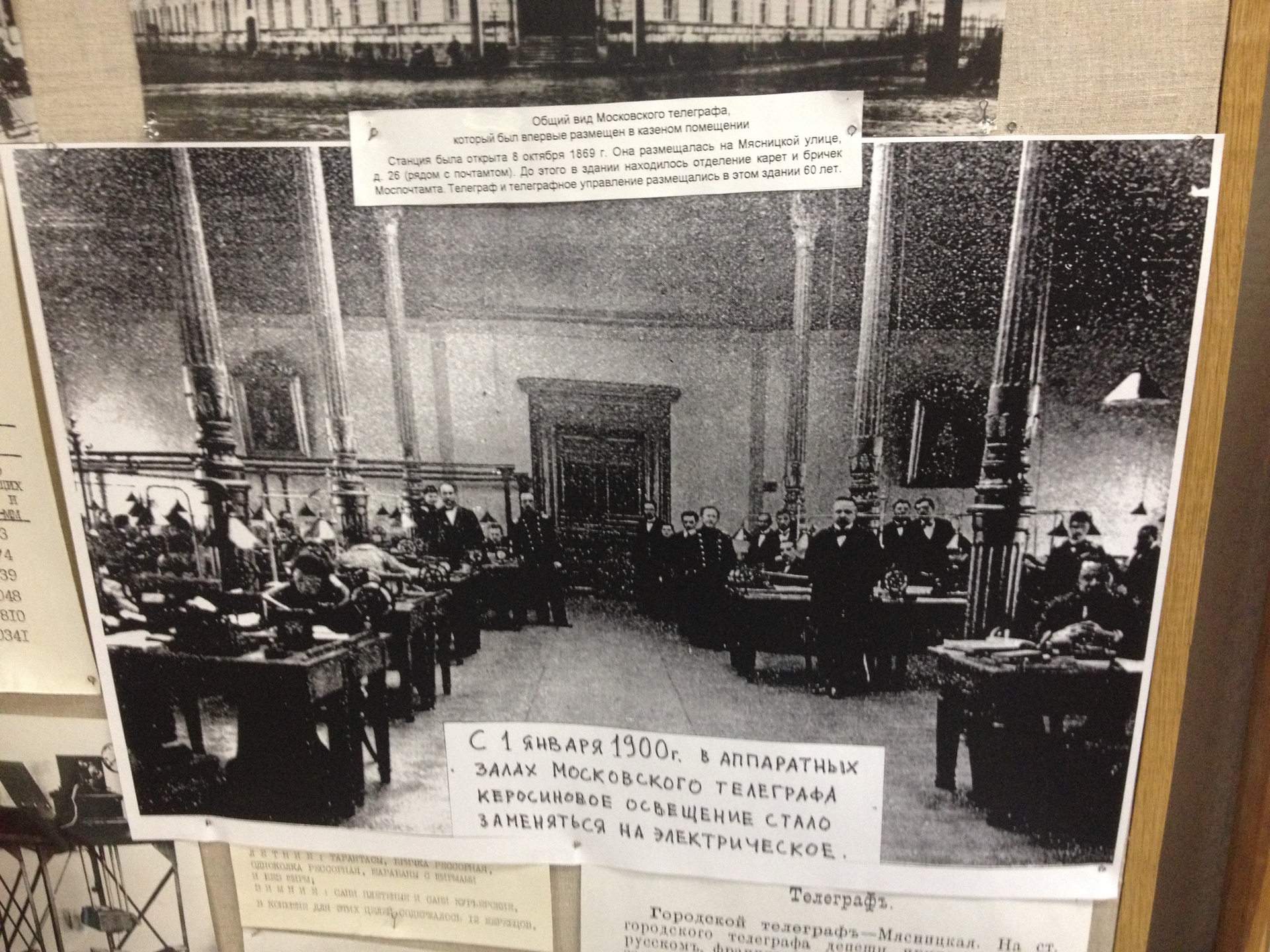
The twentieth century has begun.
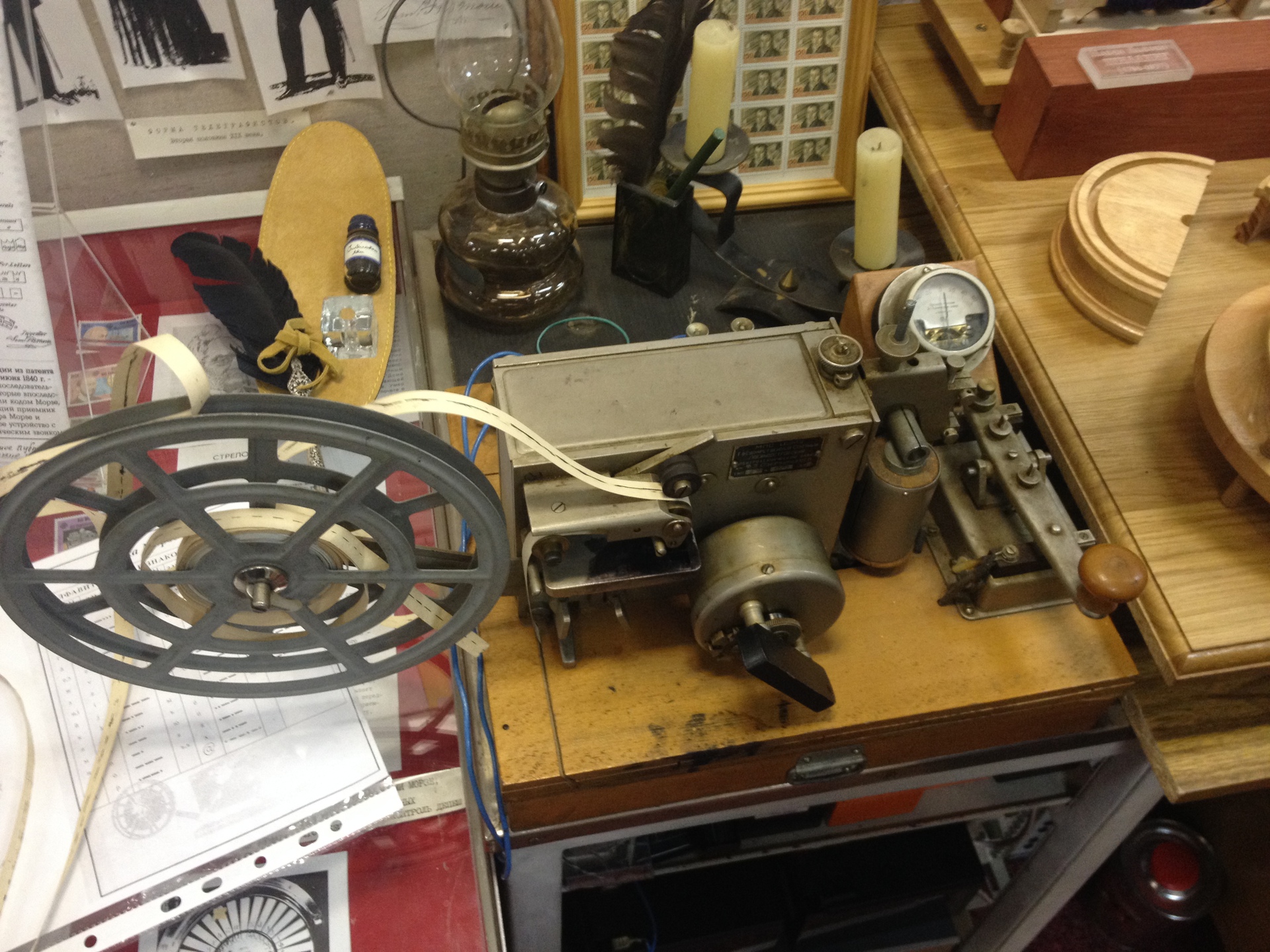
Good old Morse code. It is curious that Morse himself was an artist and knew nothing about electrical engineering. He was inspired by the invention of the telegraph by a casual conversation on his return from Europe on a steamer in 1832 A passenger in a conversation about a newly invented electromagnet said: "If the electric current can be made visible at both ends of the wire, then I see no reason why messages cannot be transmitted to them." Although the idea of an electric telegraph was being advanced before Morse, he believed that he was the first.

Years of work and study took him to telegraph earned. In 1837, he developed a system of letters and dots, which became known worldwide as the Morse Code. He did not find support either at home in the USA, nor in England, nor in France, nor in Russia, meeting everywhere a refusal. Only in 1843 there was a philanthropist who invested $ 30,000 in a Morse startup, and then you know.
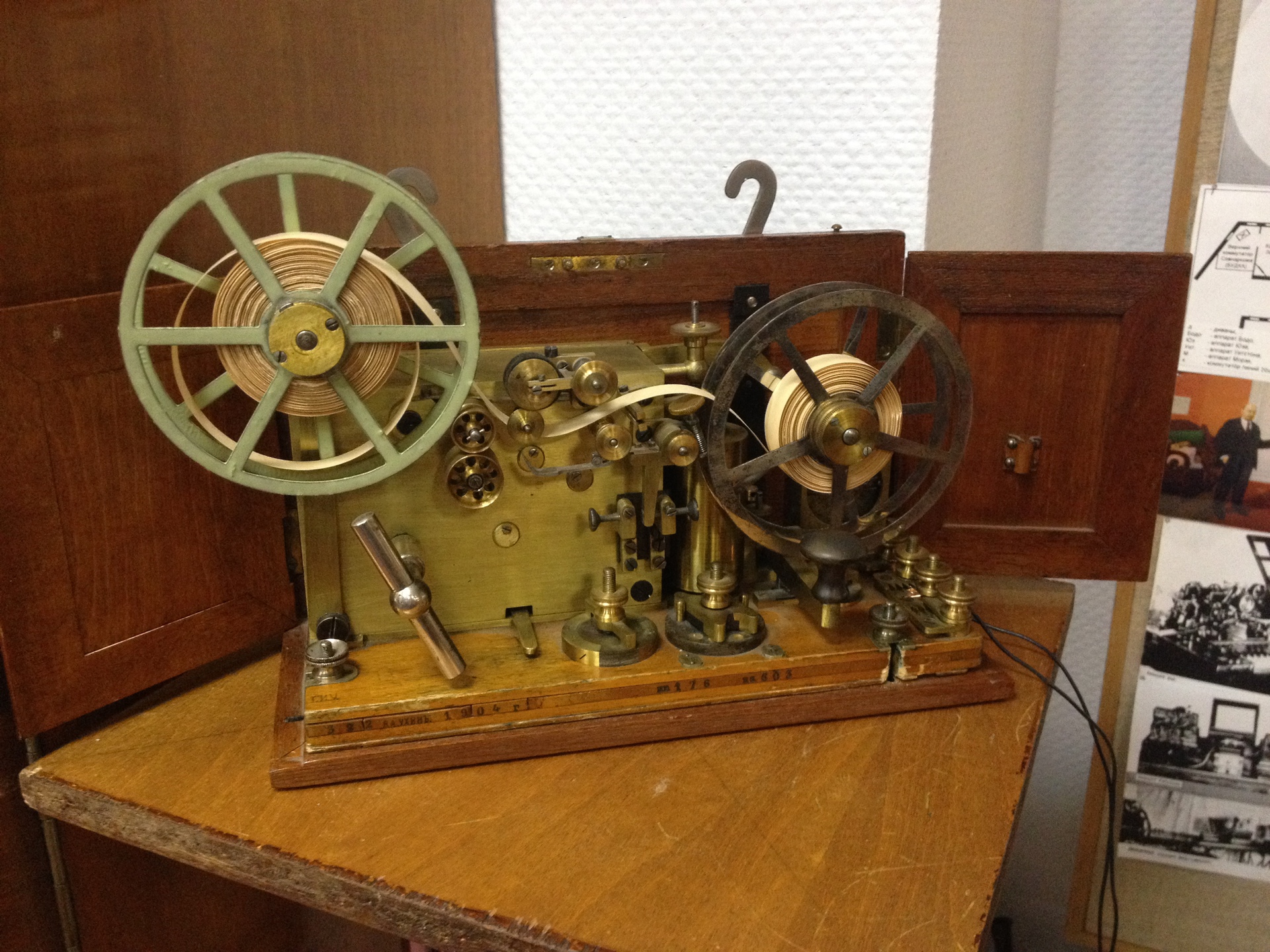
Field unit Morse 1904 release in a neat folding case.
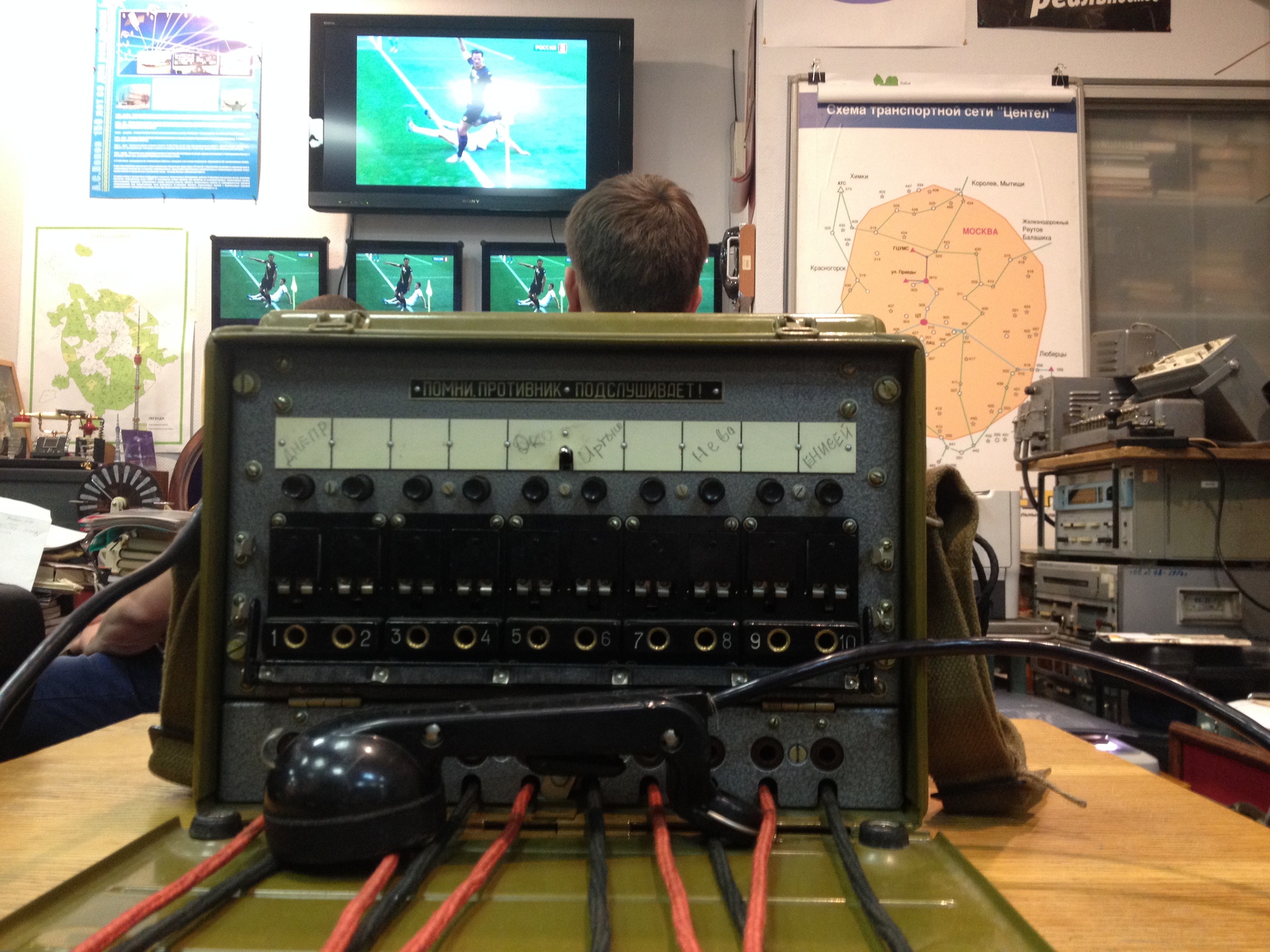
Interactive attraction of four field radios. The photo shows the field switch, unfortunately, did not remember the model.
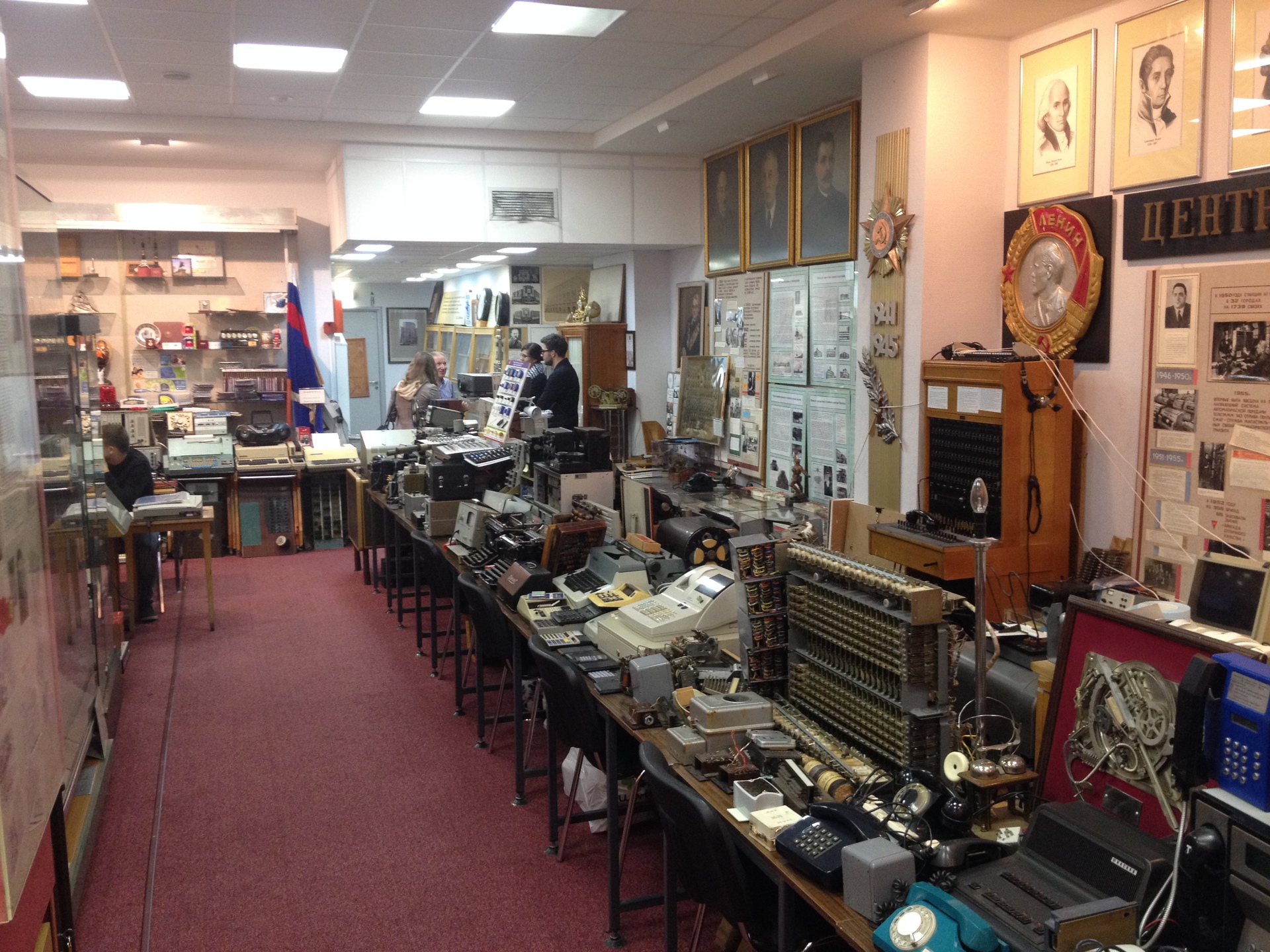
Everything, absolutely everything, the internal space of the museum is occupied by vintage gadgets, which you can drool forever - everyone works and is connected to all possible networks.
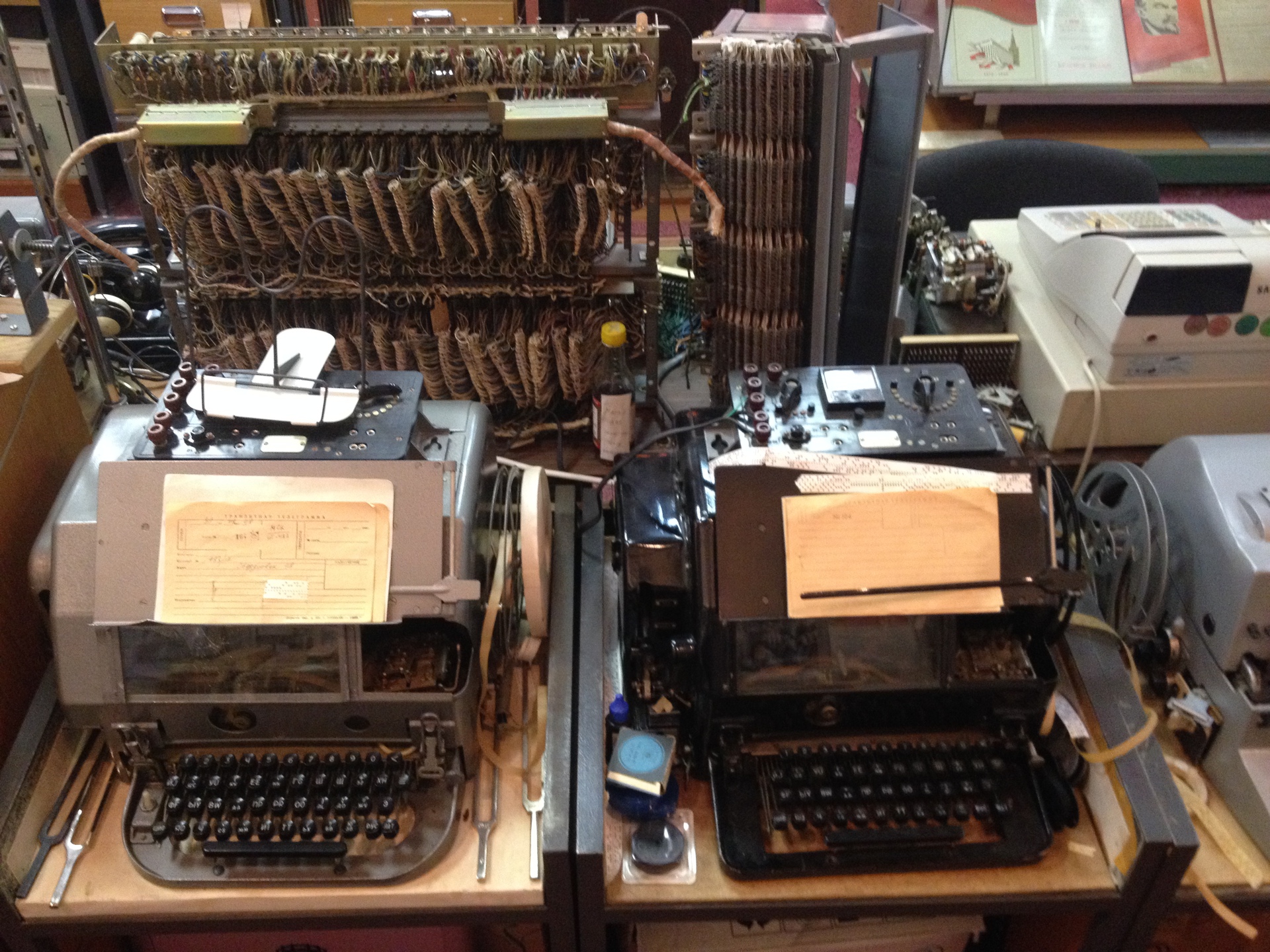
Here are the telexes. Behind them, mechanical PBX.
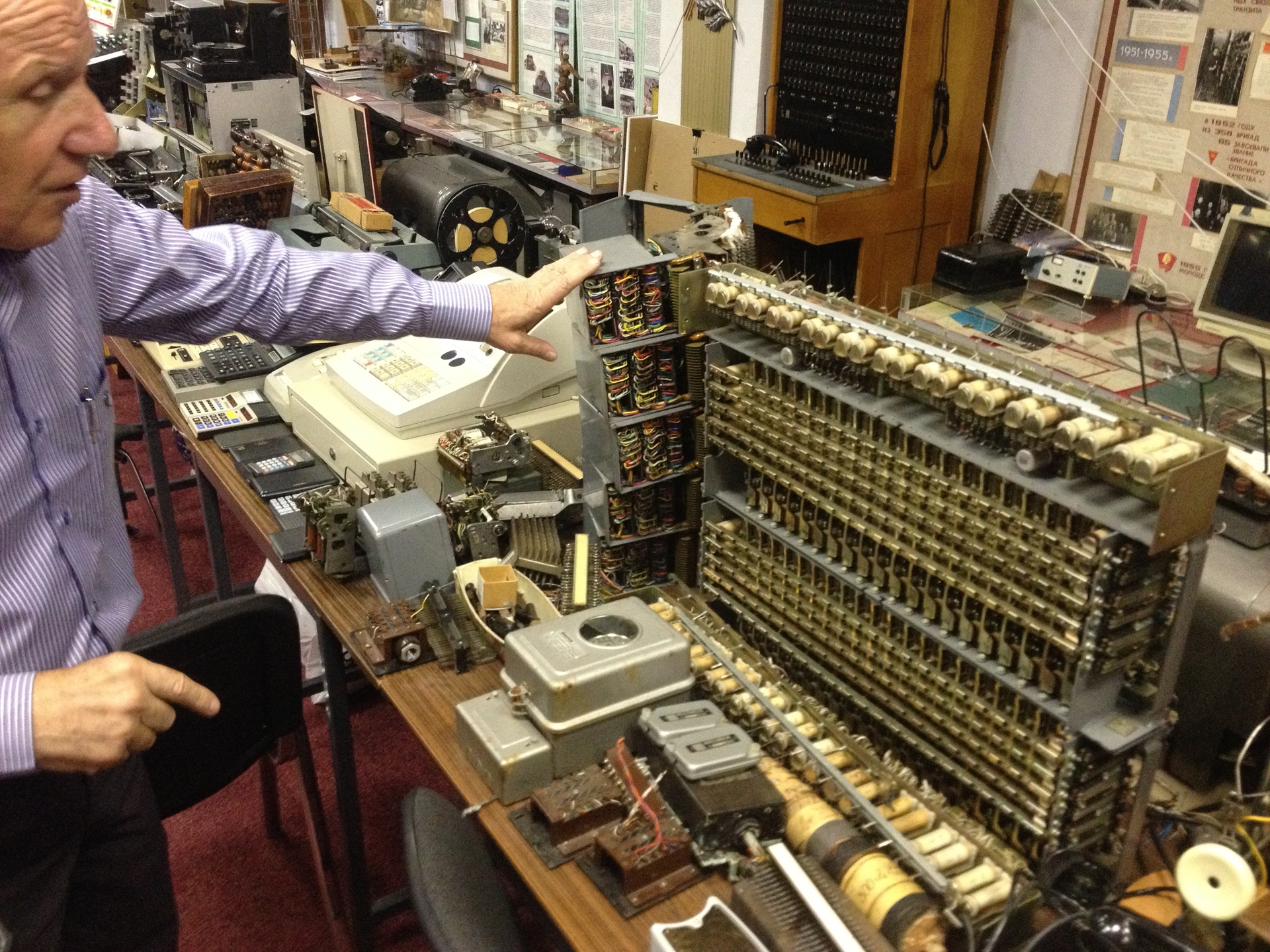
Everything is blurred and debugged, connected and working!
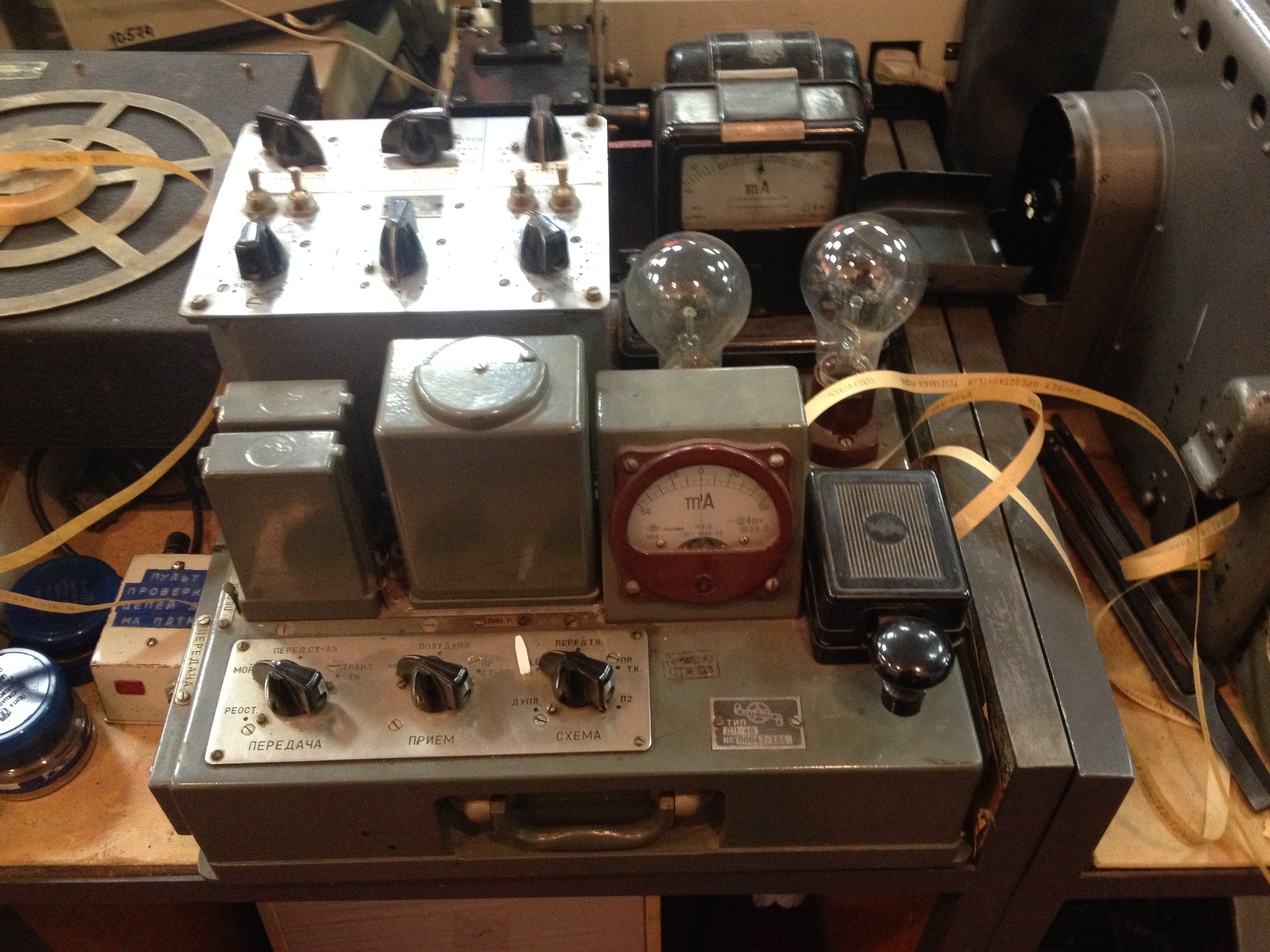
Steampunk
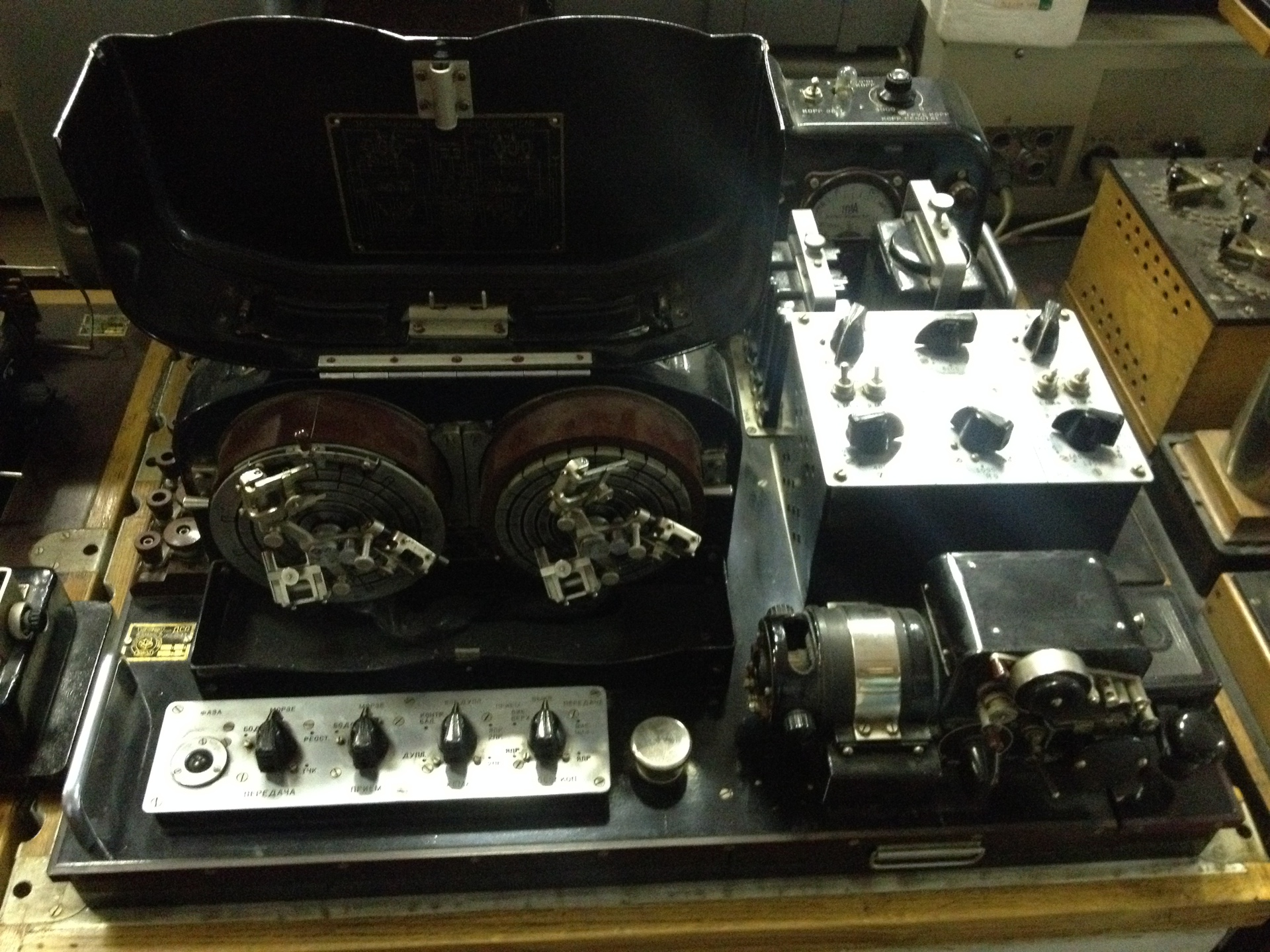
And this is a great French device Bodo. See two drums? They constantly, and very quickly, rotate the brush and, when you press the keys on the keyboard, the brush closes the electrical circuit.
In this case, keyboards and operators can be as many as six, and they all work at the same time - each has its own turn of brushes in the overall cycle. Here you have a time sharing system in its natural form. However, such a machine required extremely precise synchronization. That's when synchronization becomes a key issue in telecommunications.
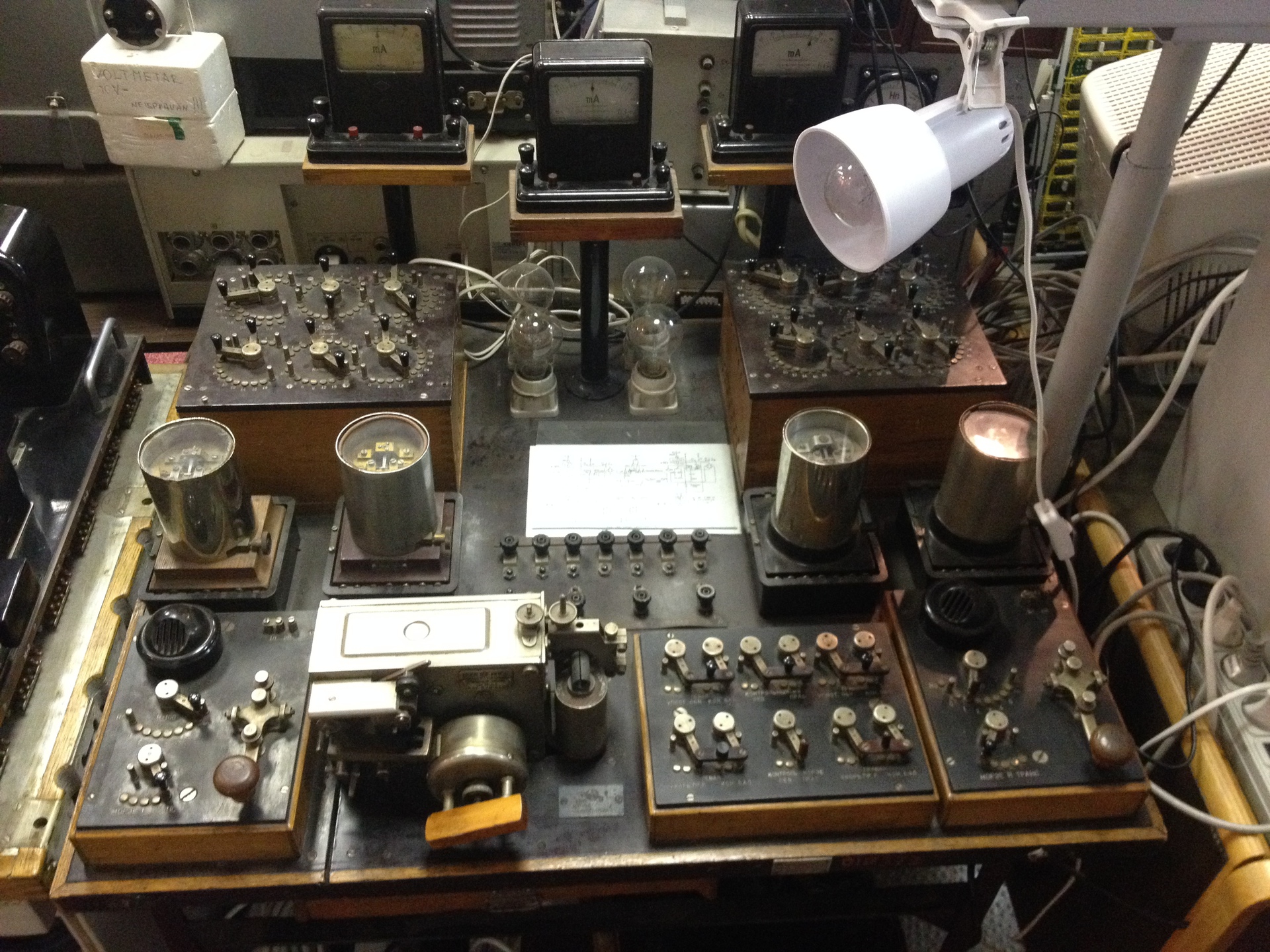
This is what I call a serious user interface.

A separate tear of emotion causes a table of the history of cell phones.
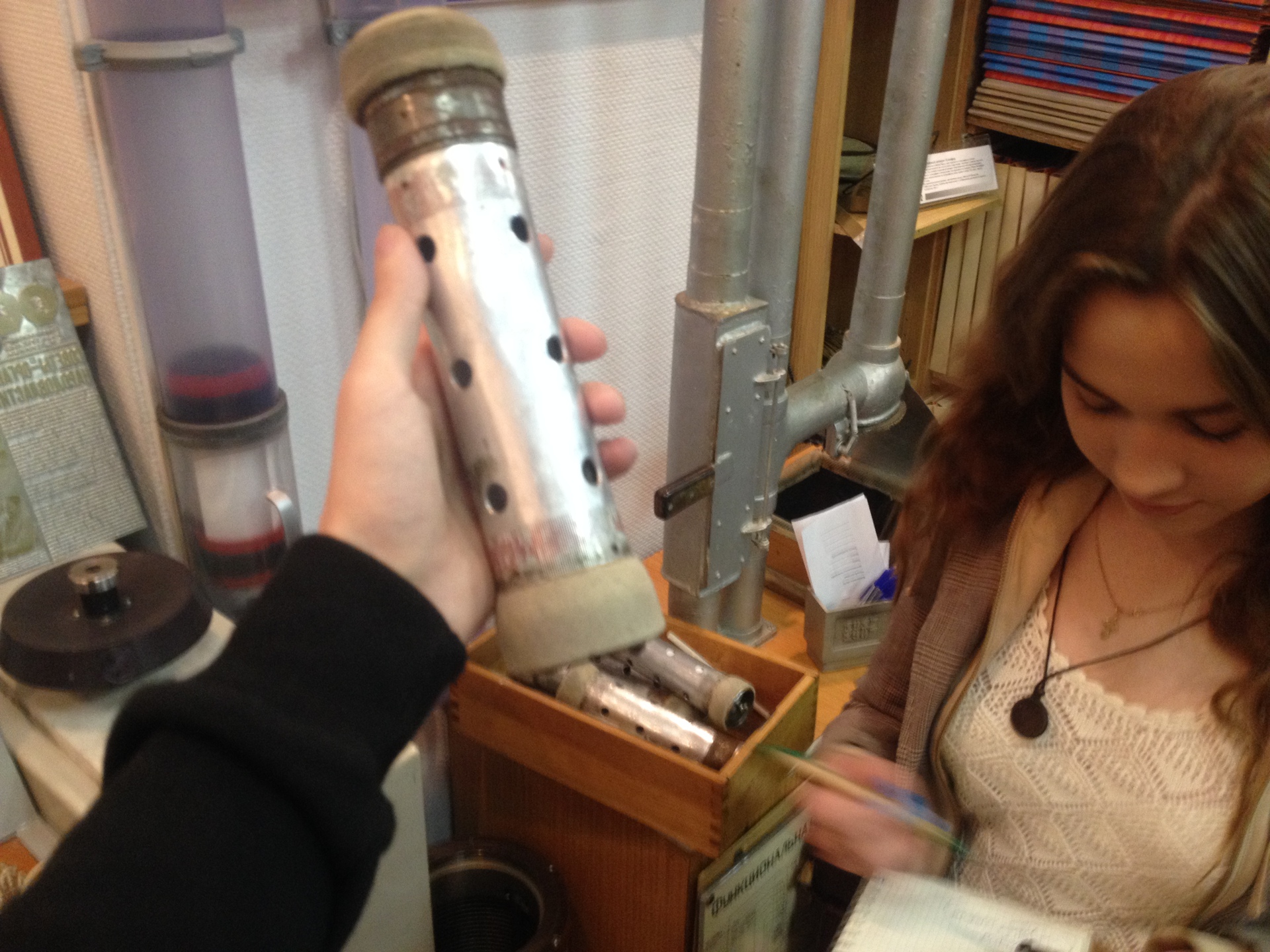
Where without the existing pneumomail?
Now it's time to take a short break and visit the attic of the telegraph and its famous clock with a bell!
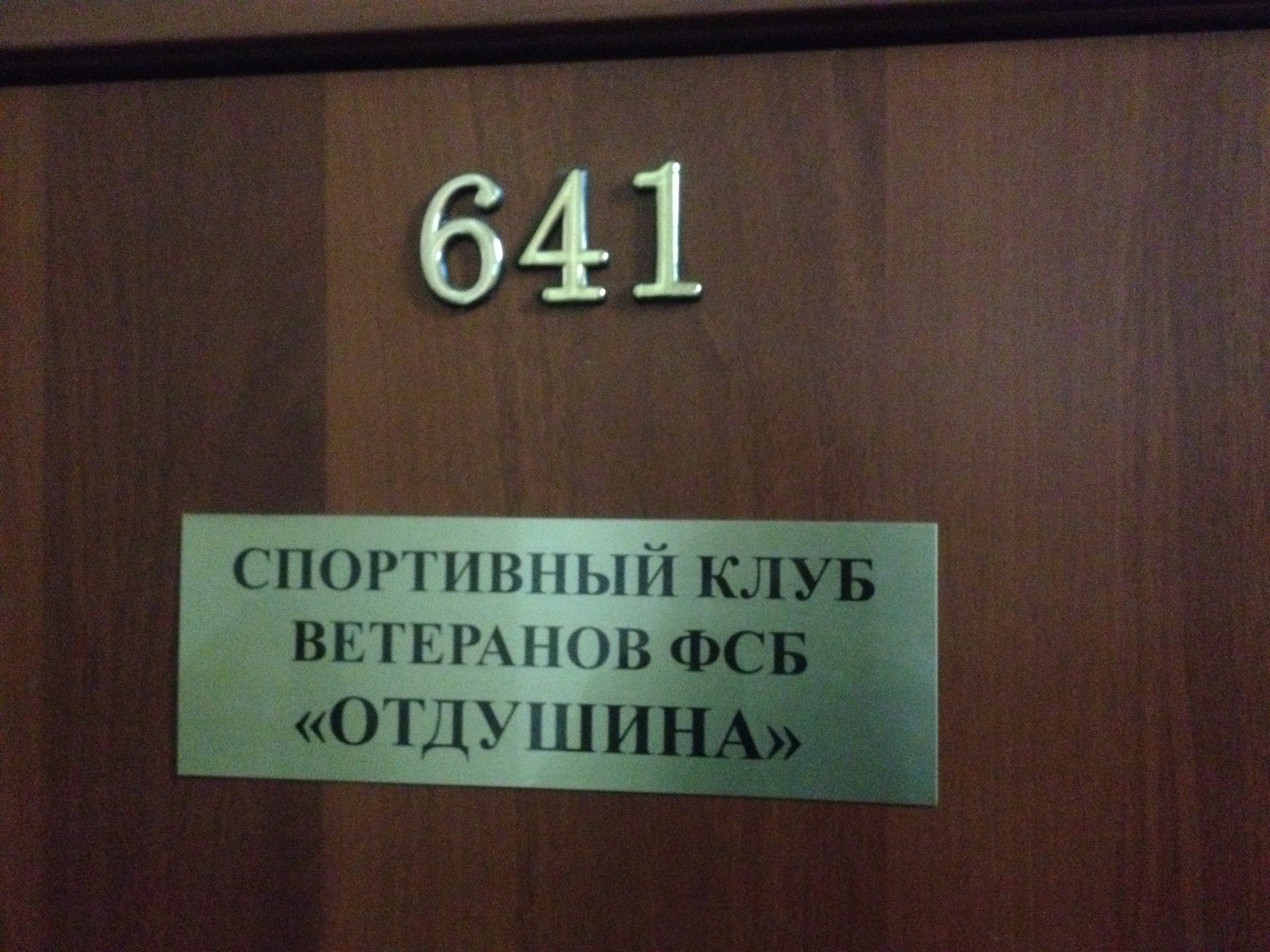
Regime object.
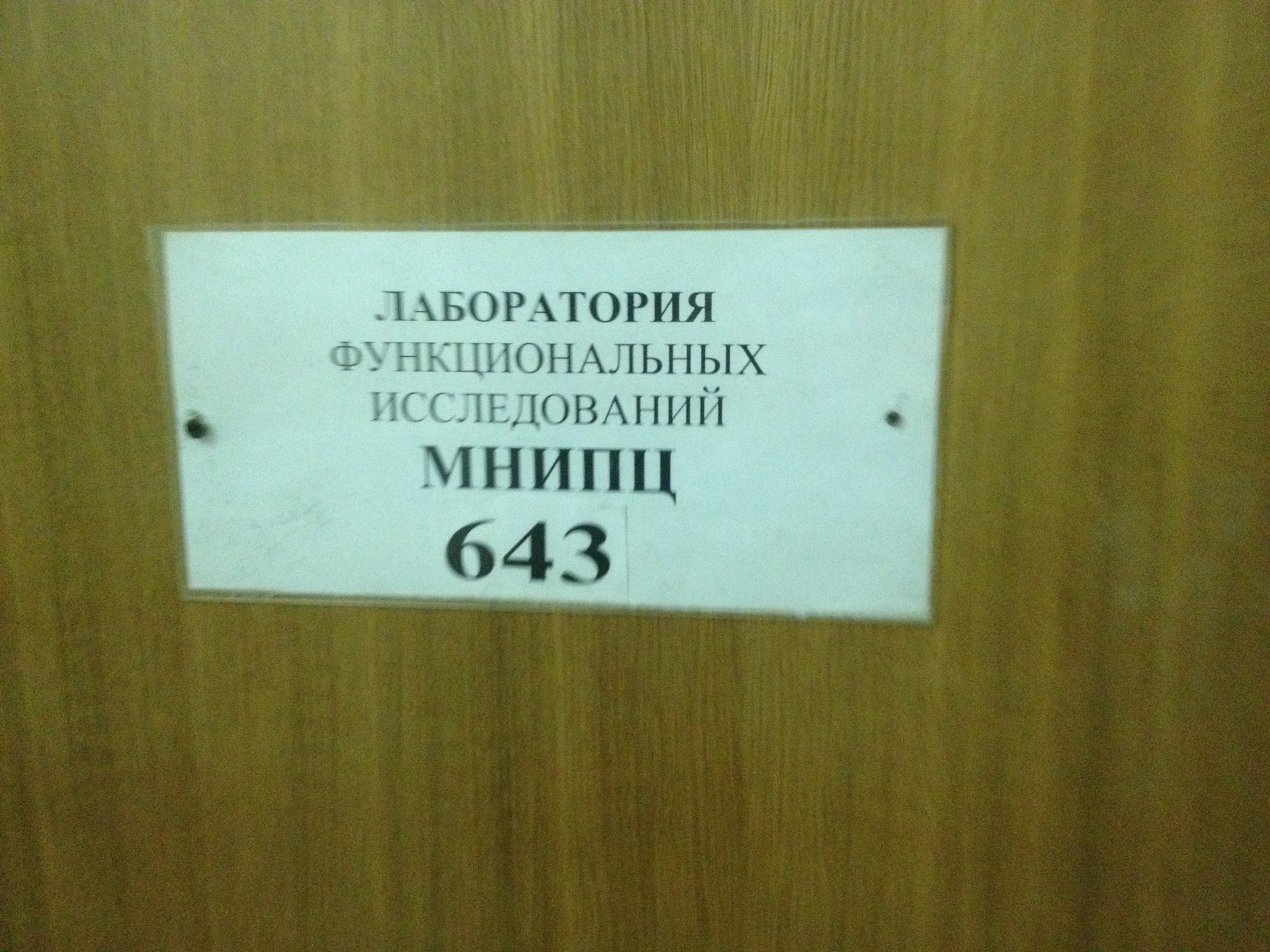
Under this sign can be anything.
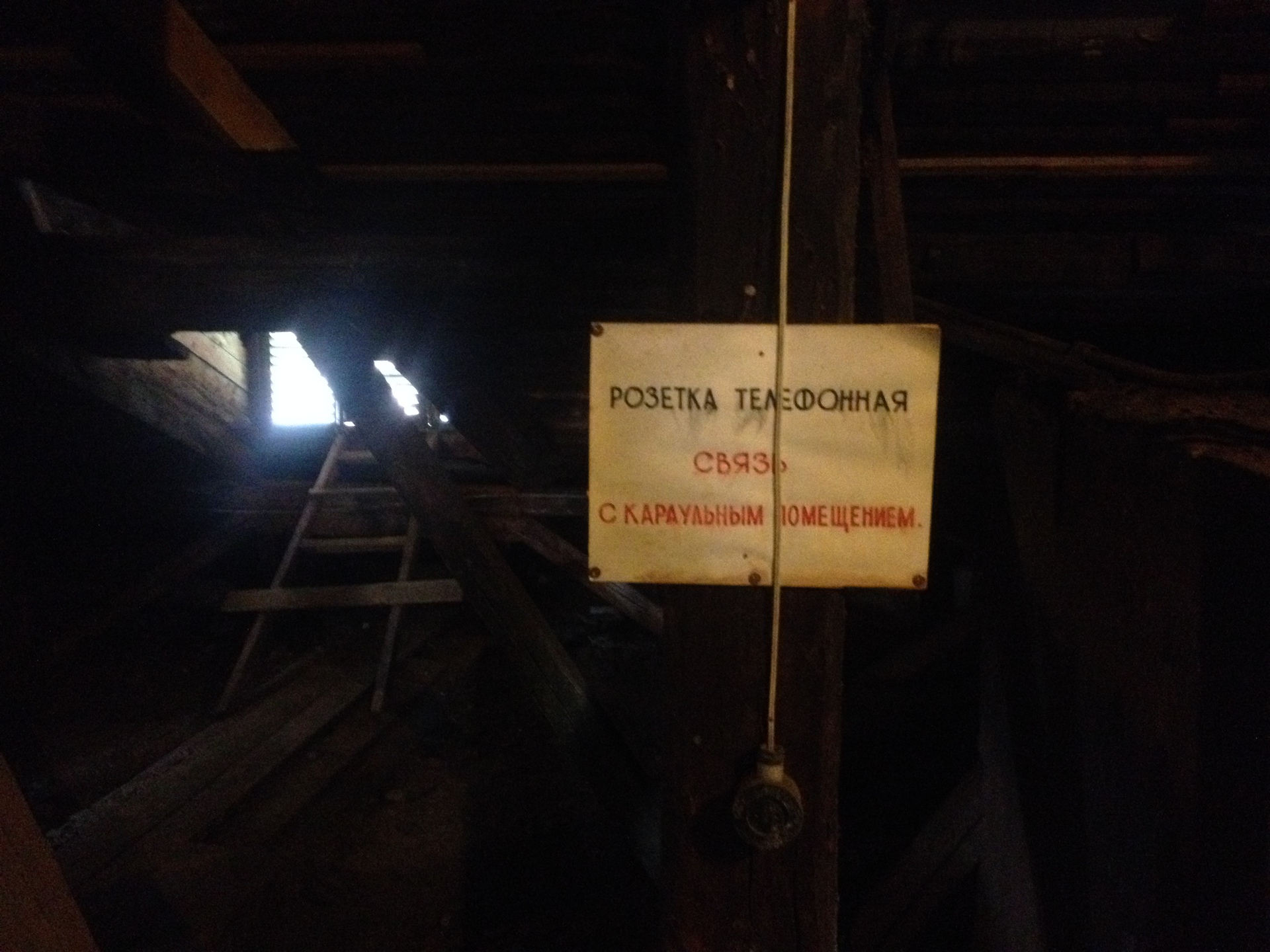
Looks like all the staff carried telephones with them?
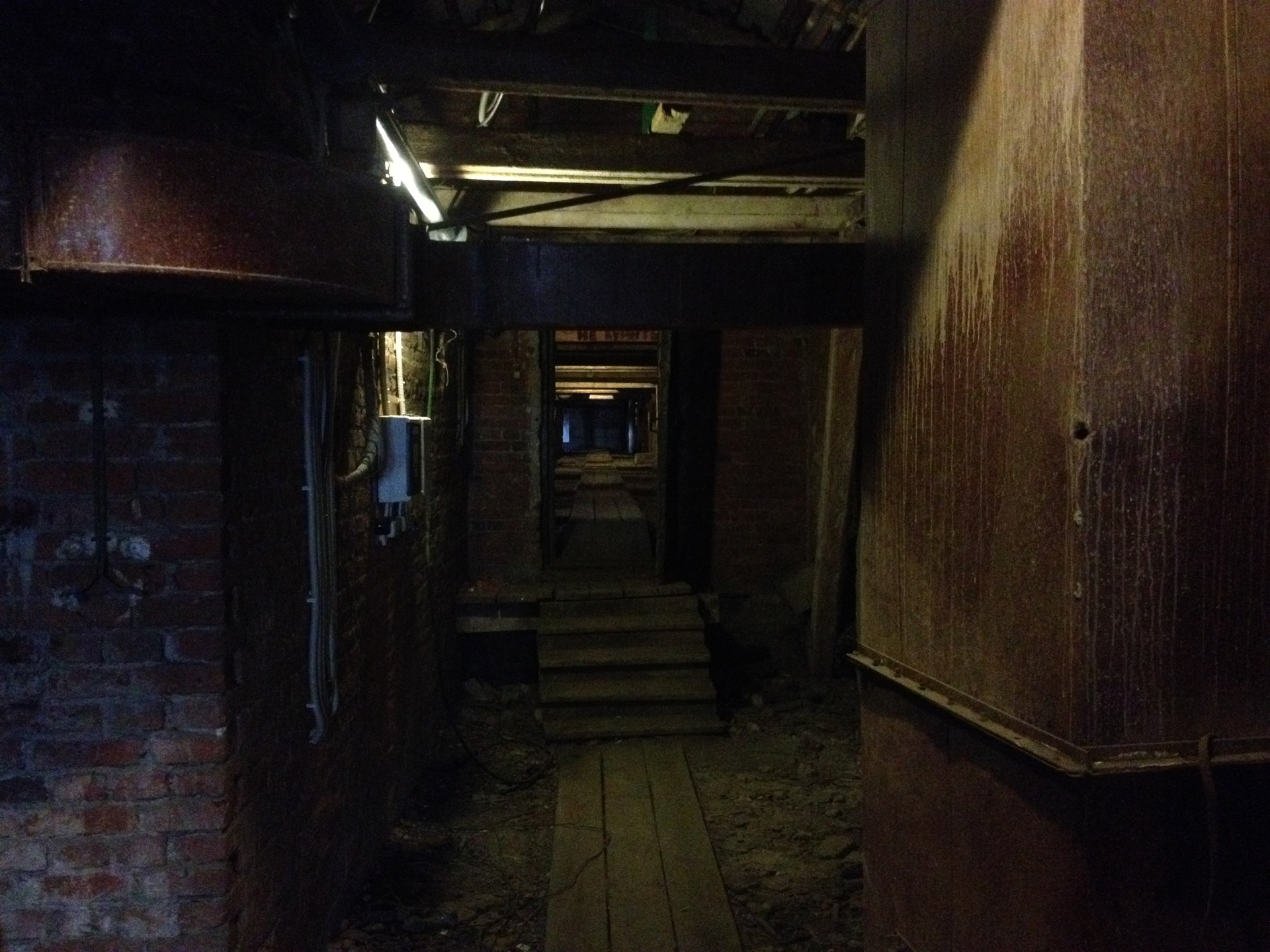
Attic pass-through throughout the building, getting lost is quite simple.
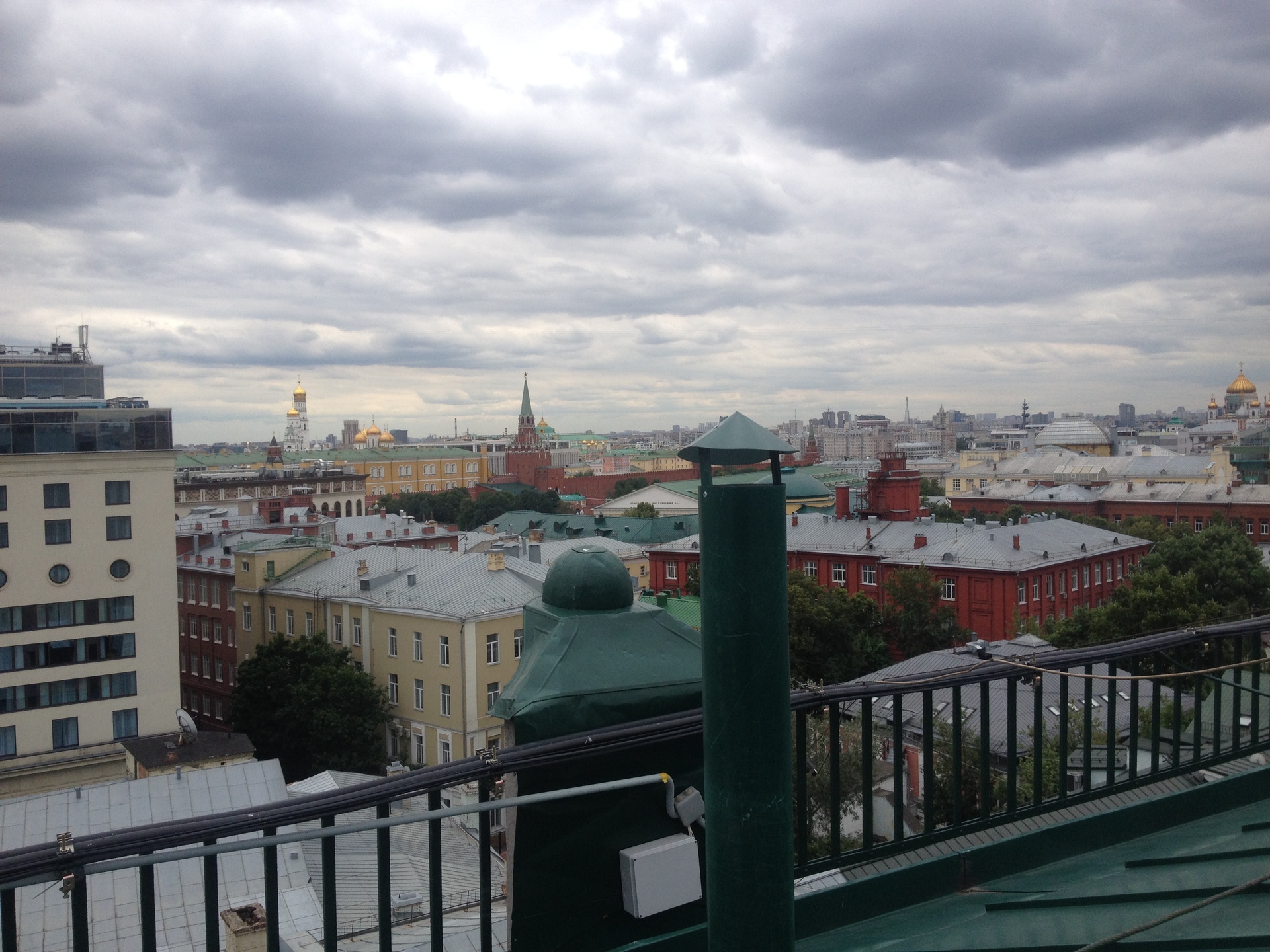
View of the Kremlin.

The telegraph clock is one of the oldest in Moscow. No one knows for sure when they are made, but certainly before the 20th century.
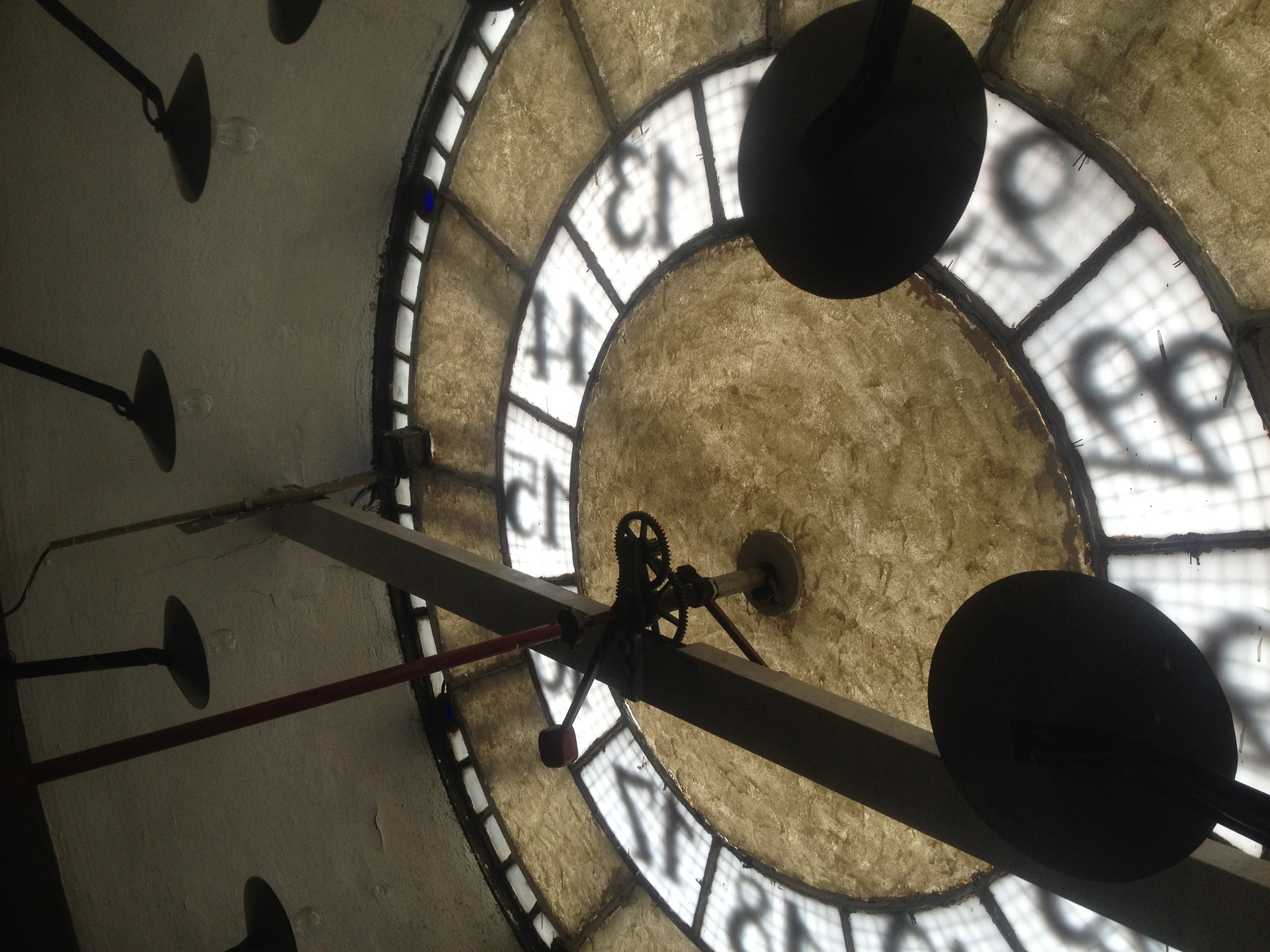
The reverse of the dial.
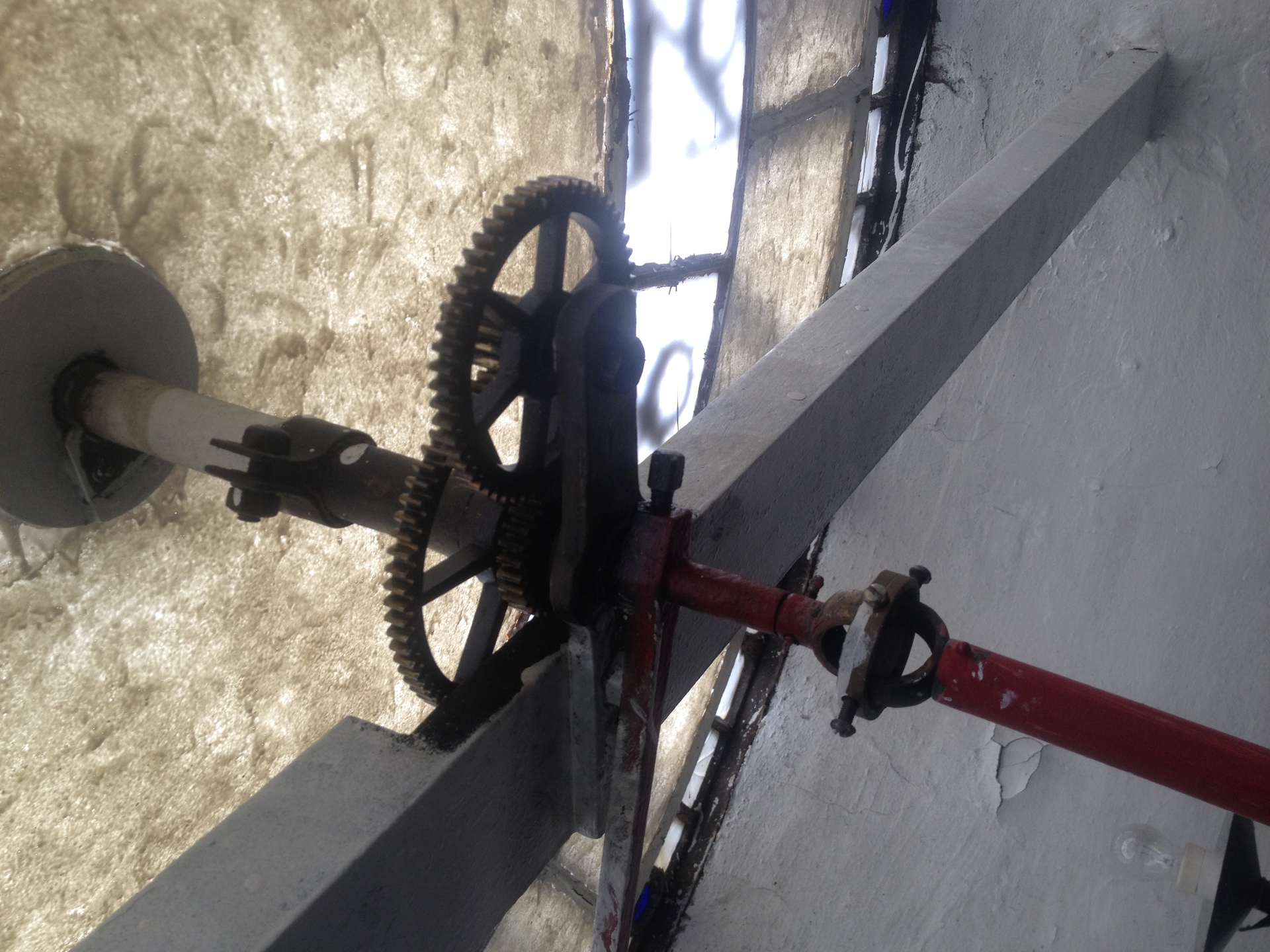
The shaft rotates the minute hand, and three gears turn the minutes into hours.
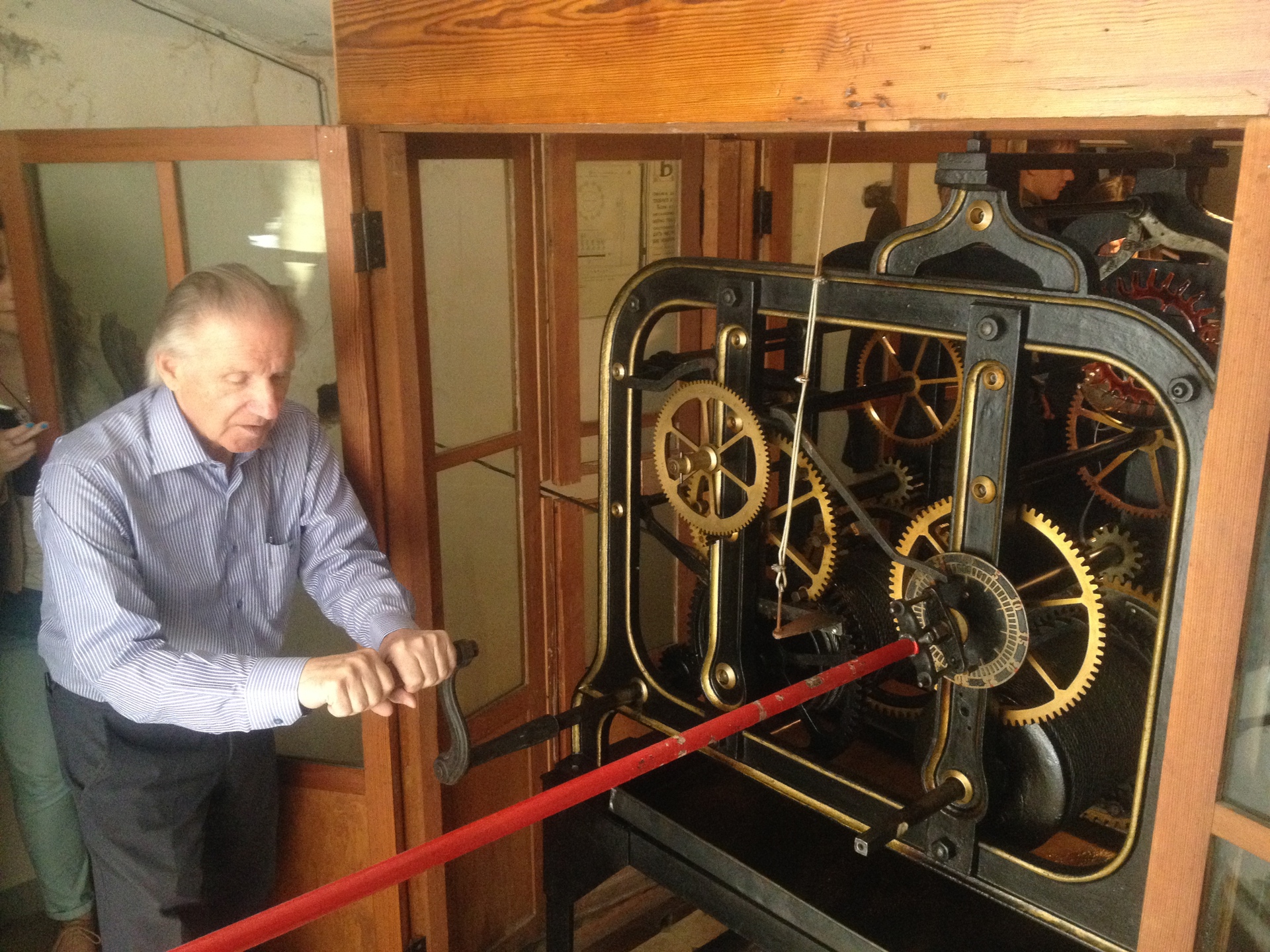
It is not easy to wind up the clock - you need to lift two 19 kg weights, hidden in the walls. But the plant lasts a week.
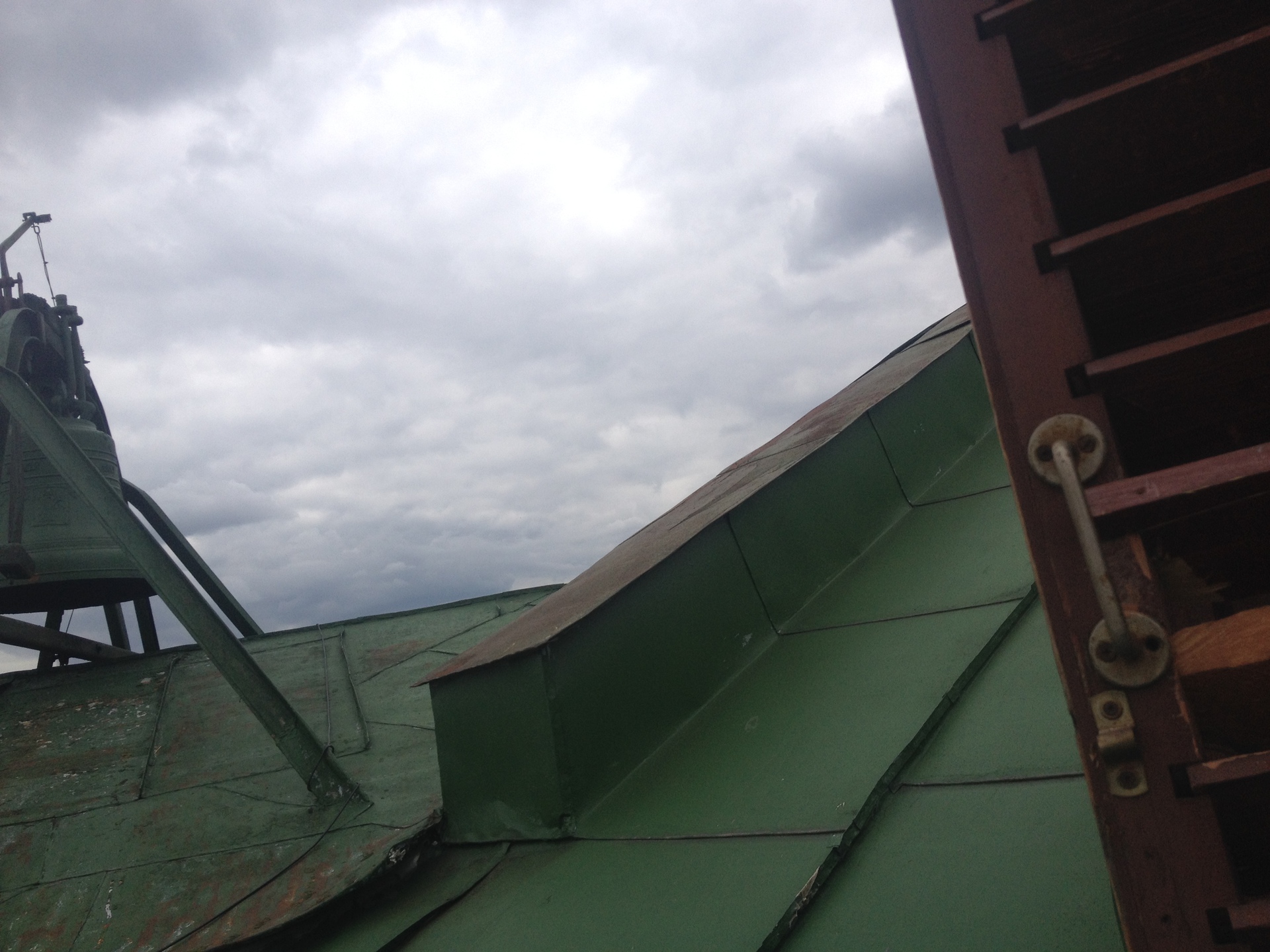
You can’t do this, but I climbed out of the window to sfotkat the bell on an outstretched hand (unfortunately unsuccessfully) - they say the residents of the neighboring houses were asked to make it quieter in the 1930s, and since then few people know that every hour chime. Anyway, who knows that at the very beginning of Tverskaya is a street bell?
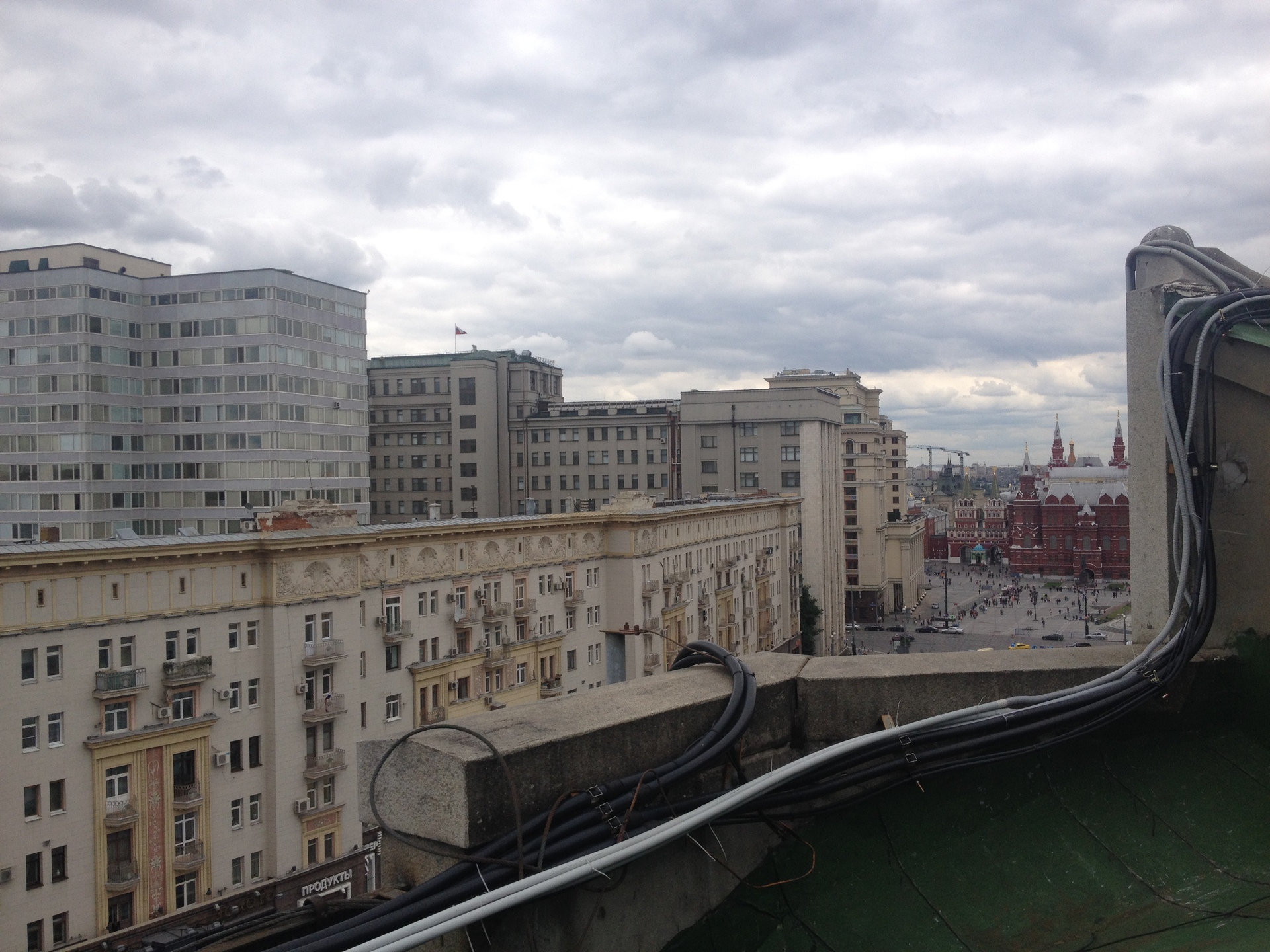
An interesting view of Tverskaya.

Inside the attic is the only navigation - by the names of the lanes.

The smell of time.
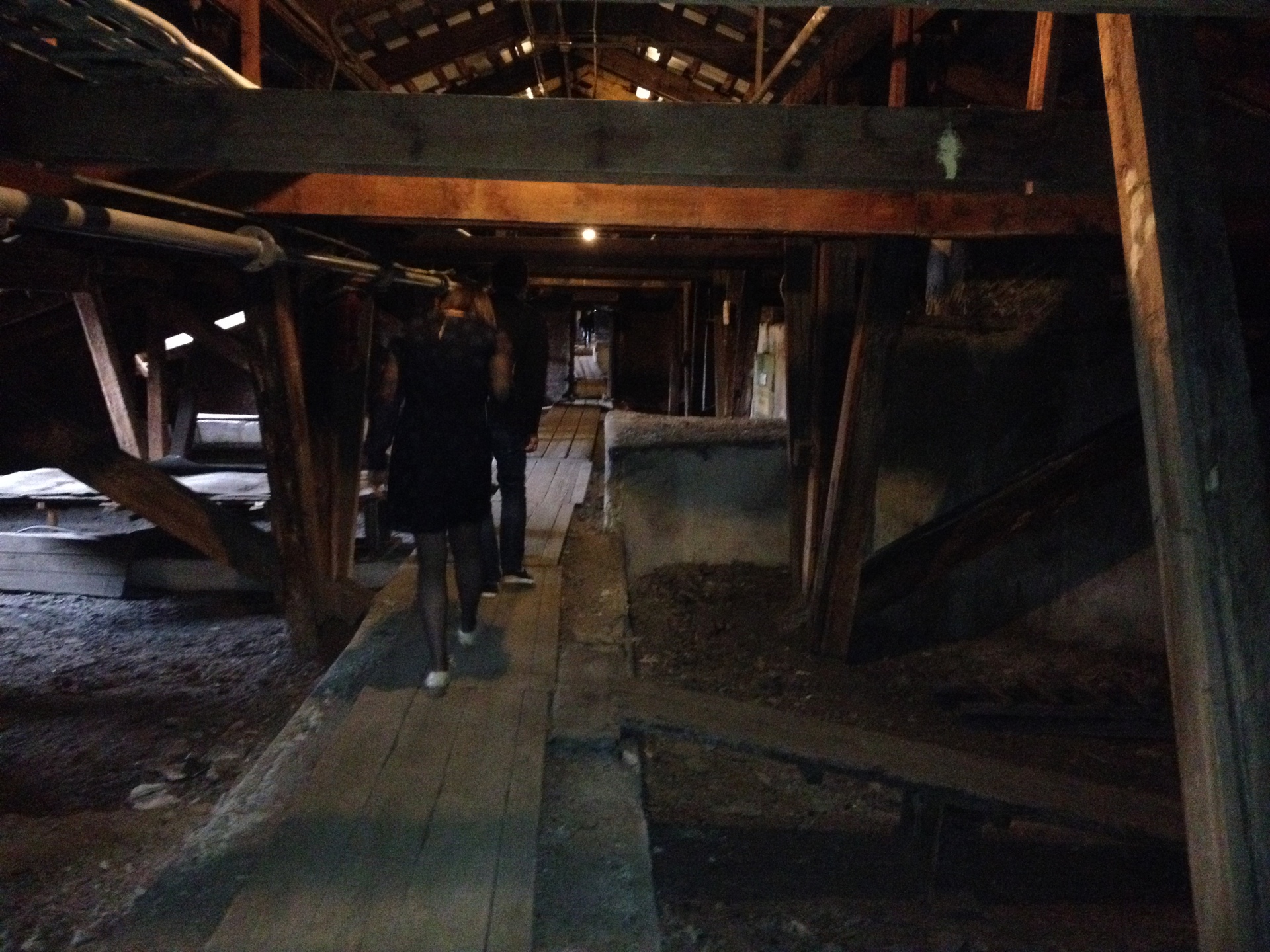
And just the most beautiful attic in Moscow.

We went down through the coworking DI Telegraph . It occupies one of the engine rooms on the fifth floor - a fantastically spacious place with almost no walls - only windows. I do not even know what to compare with. Light overlaps and industrial design of the beginning of the last century create the overall impression that you are in New York.
Today, ebay is holding a conference here, but in general it’s like this (photos from ditelegraph.com/spaces ):

It is no coincidence that dandies called Tverskaya Broadway. One can only imagine what beauty comes here in the evening. Hanging garlands outside the window decorate the telegraph during the holidays and just the weekend.

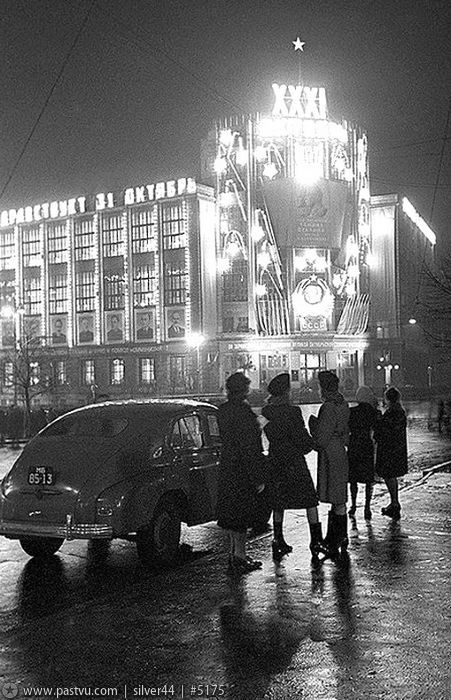
In addition to coworking here is a conference room. Just free space of 900 square meters (!) For fashion events in the heart of the city.
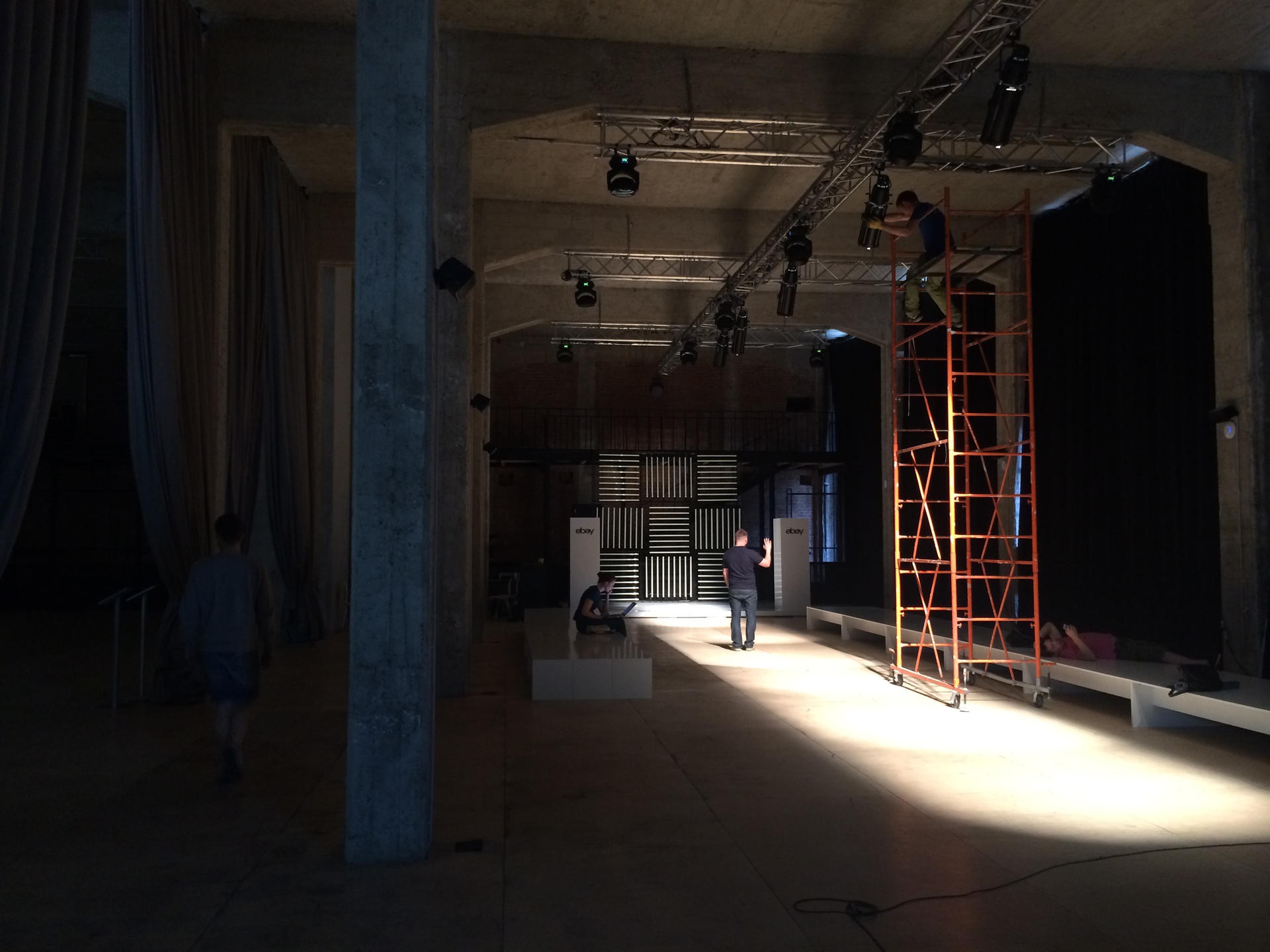
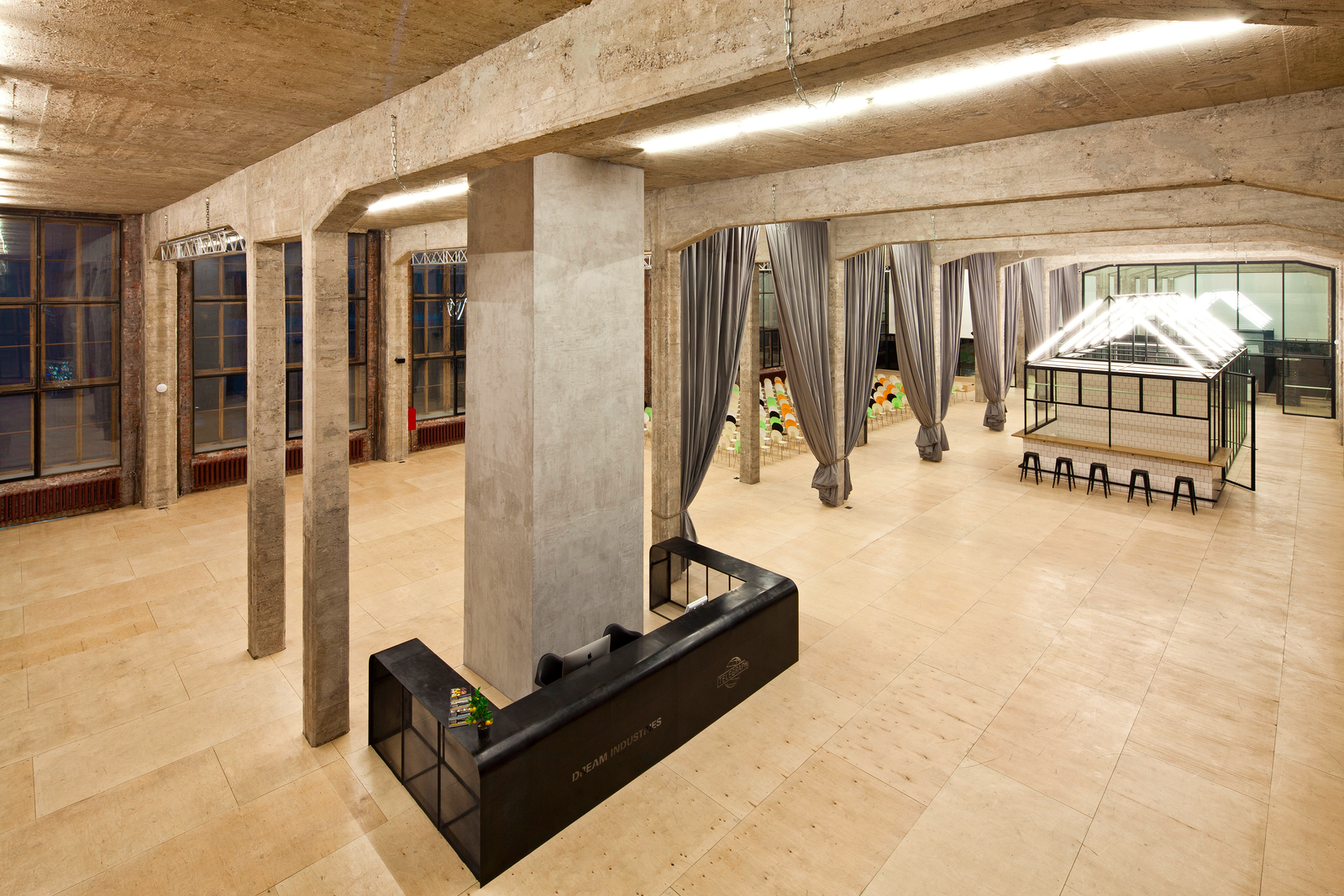
Well, back to our tour.
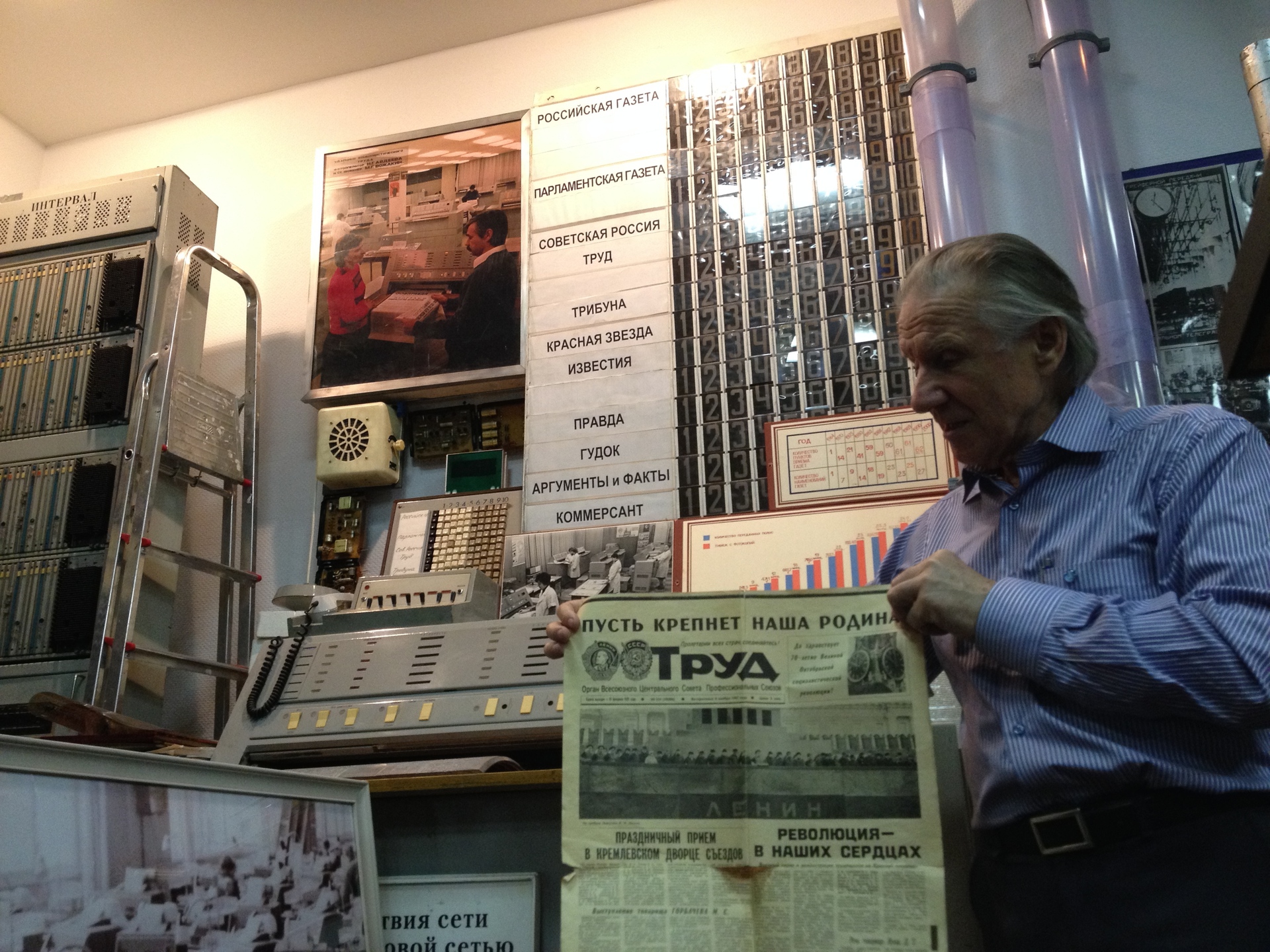
The device on the IMHO photo is simply outstanding. This is an all-union newspaper printing system. It contains a printer, scanner, modem, photoshop and a whole bunch of little things.
It is intended only for one function - so that throughout the USSR in the morning fresh issues of national newspapers lay on the shelves. That in Brest, that in Vladivostok.

The newspaper is loaded into the drum face up, the drum is inserted into the machine.

A rotating scanner is launched into the drum and scans the newspaper line by line. Then, through its own channels, it transmits data to the same devices throughout the country. Behind you can see a place in the car where the drum is inserted.

The system does not work quickly, so whole machine rooms with dozens of operators were used.
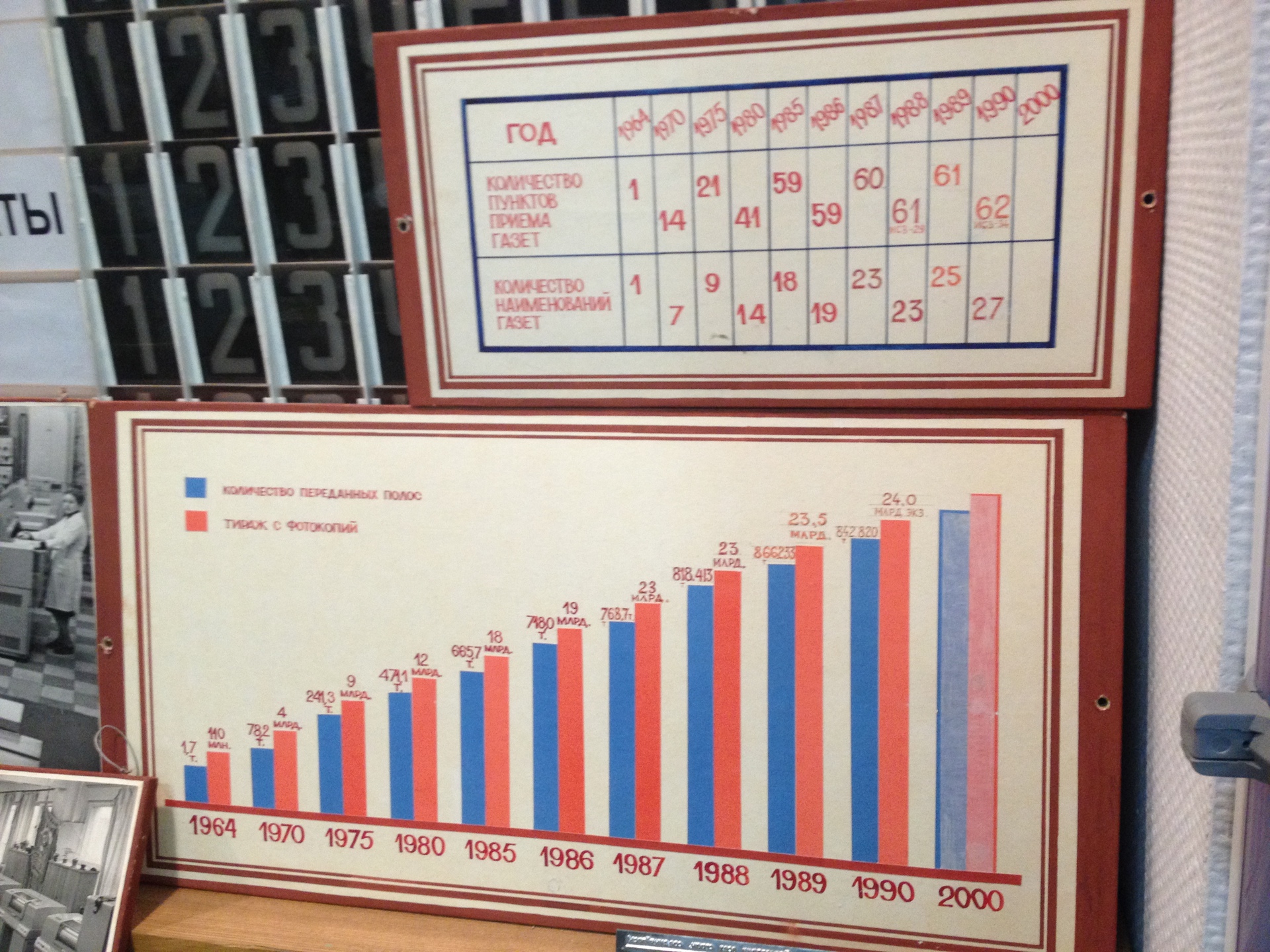
The system worked until 2008, starting in 2000. The signal was transmitted through the modulation of the signal of the first channel.
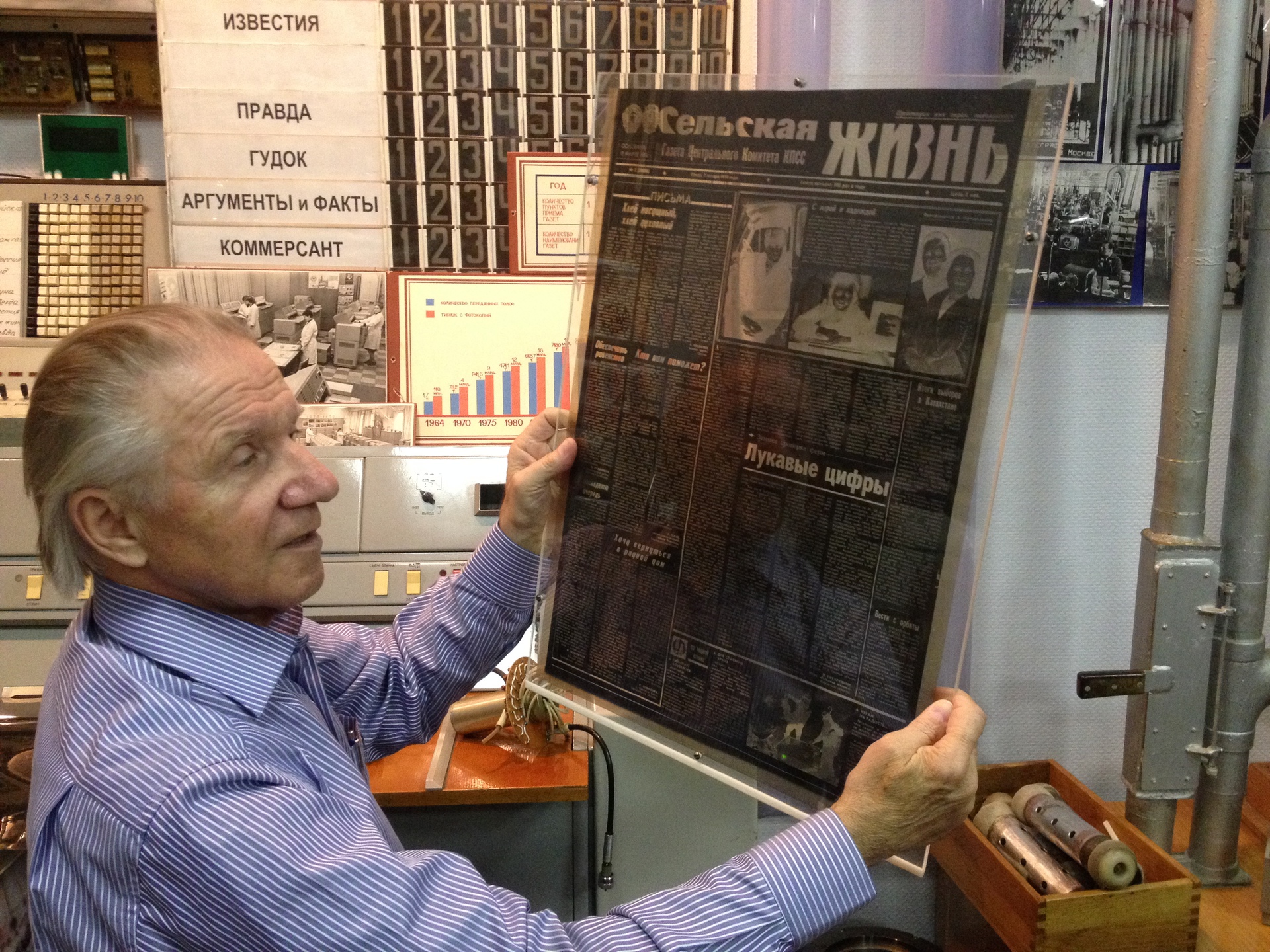
At the exit from the car in Vladivostok, we received such a negative on the film.

With the help of the negative by chemical means, the printed form was etched with which the circulation was already printed.
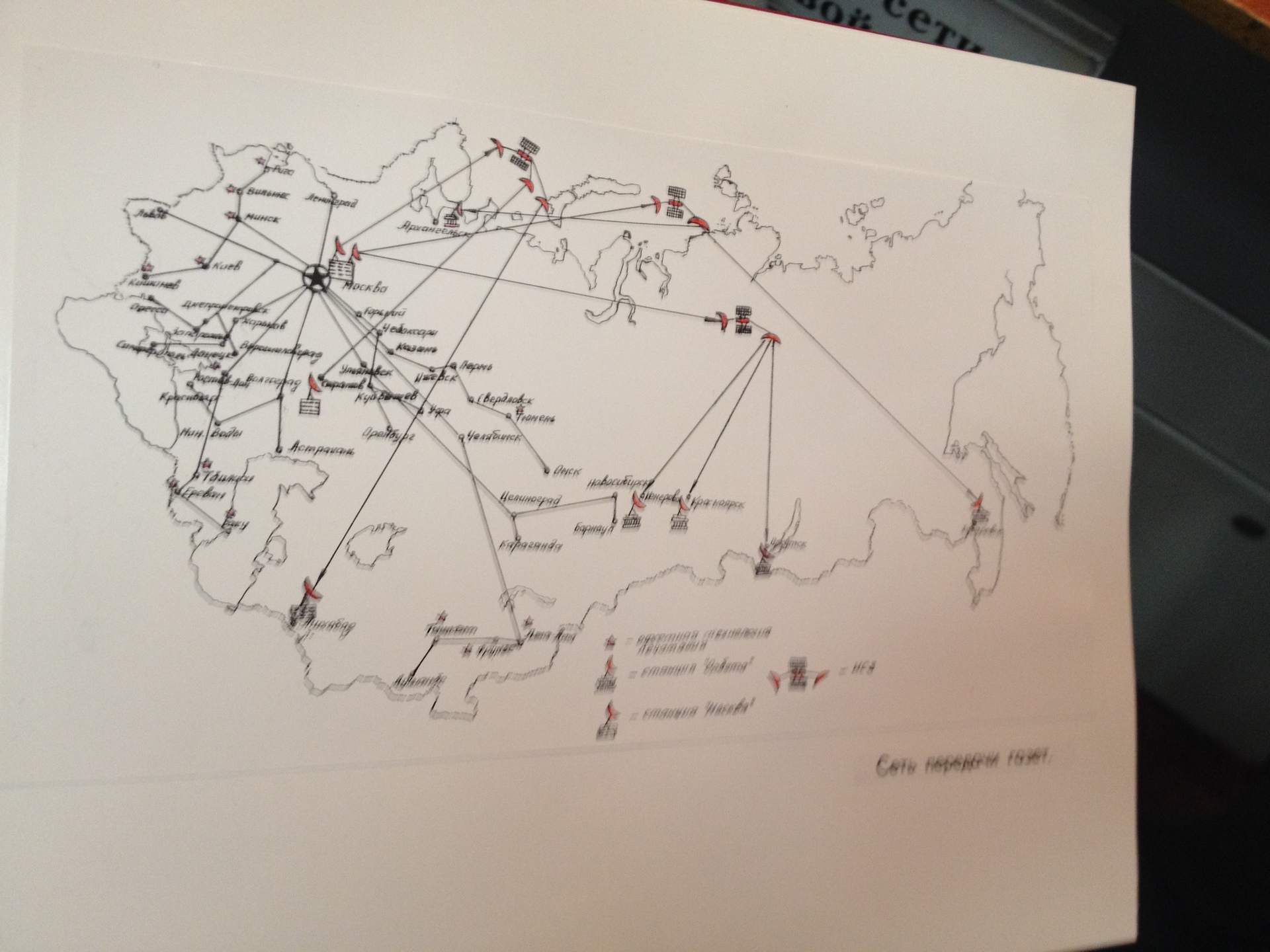
The console itself is only a small part of the system.

Here is another one of its devices - receiver-comparator. It serves as one simple function - system synchronization by time signals. Do you know these beeps at midnight on the radio? So, this is a civilian signal for common needs. Industrial time signals are transmitted at other frequencies around the clock.
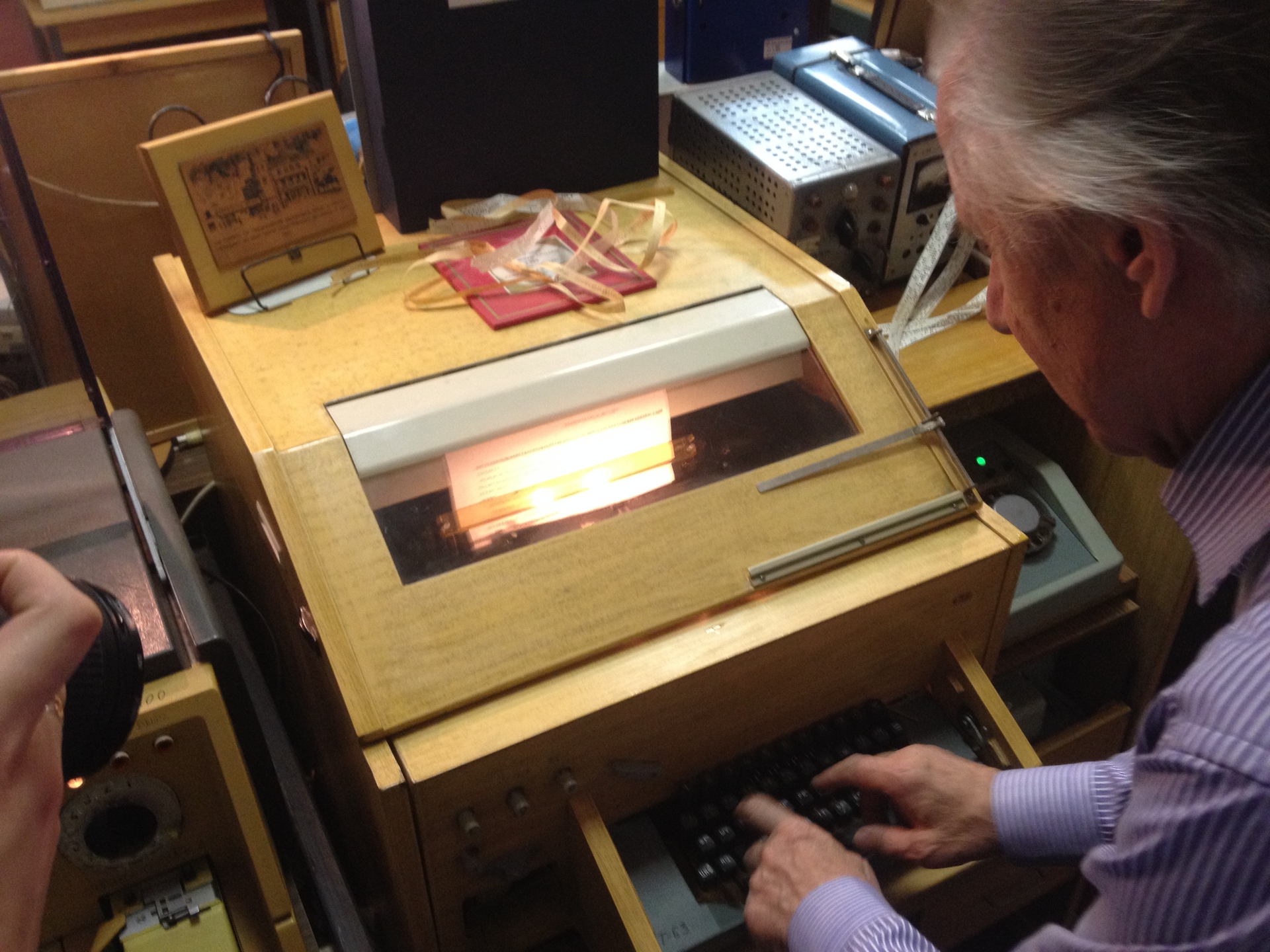
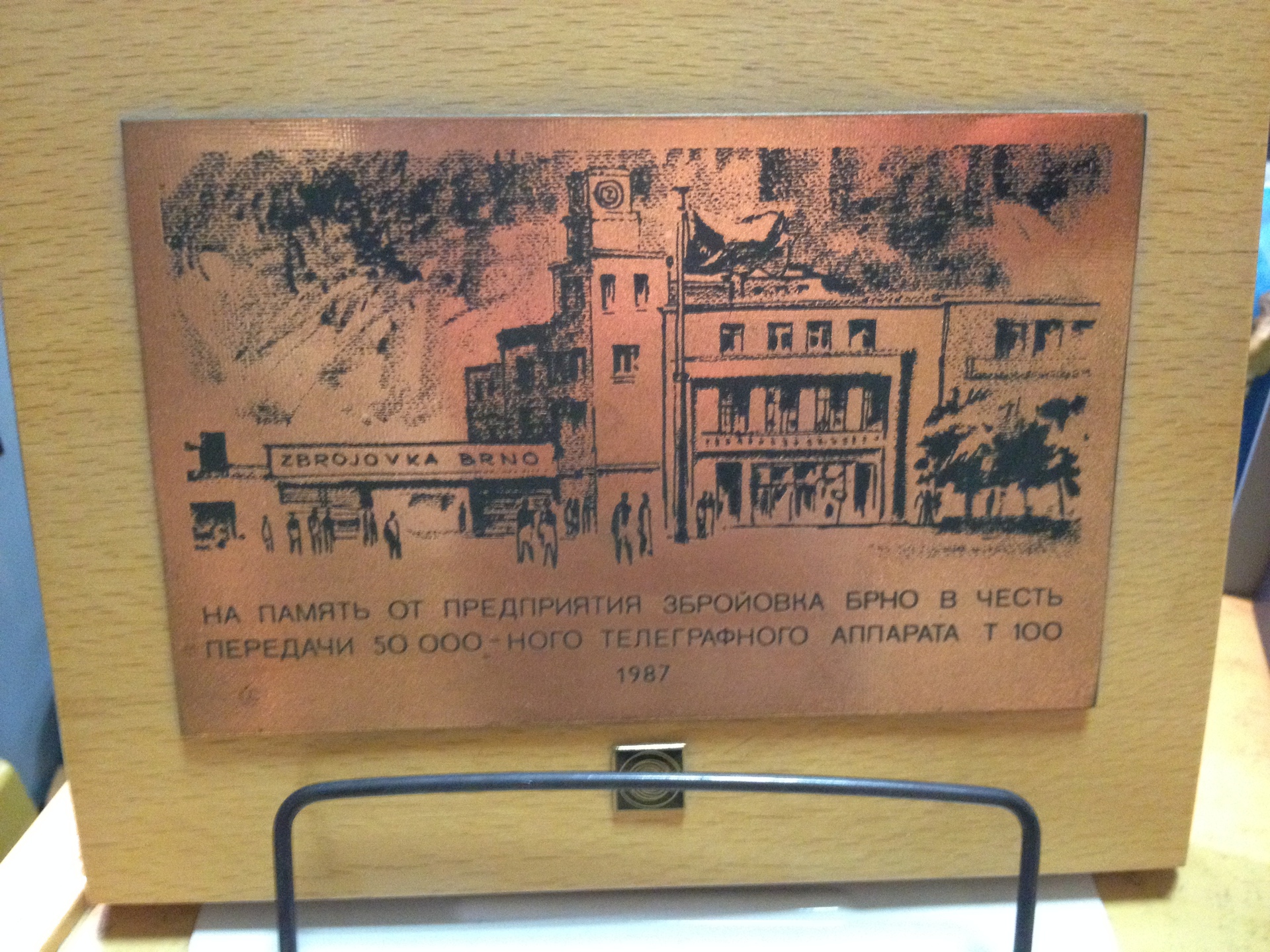
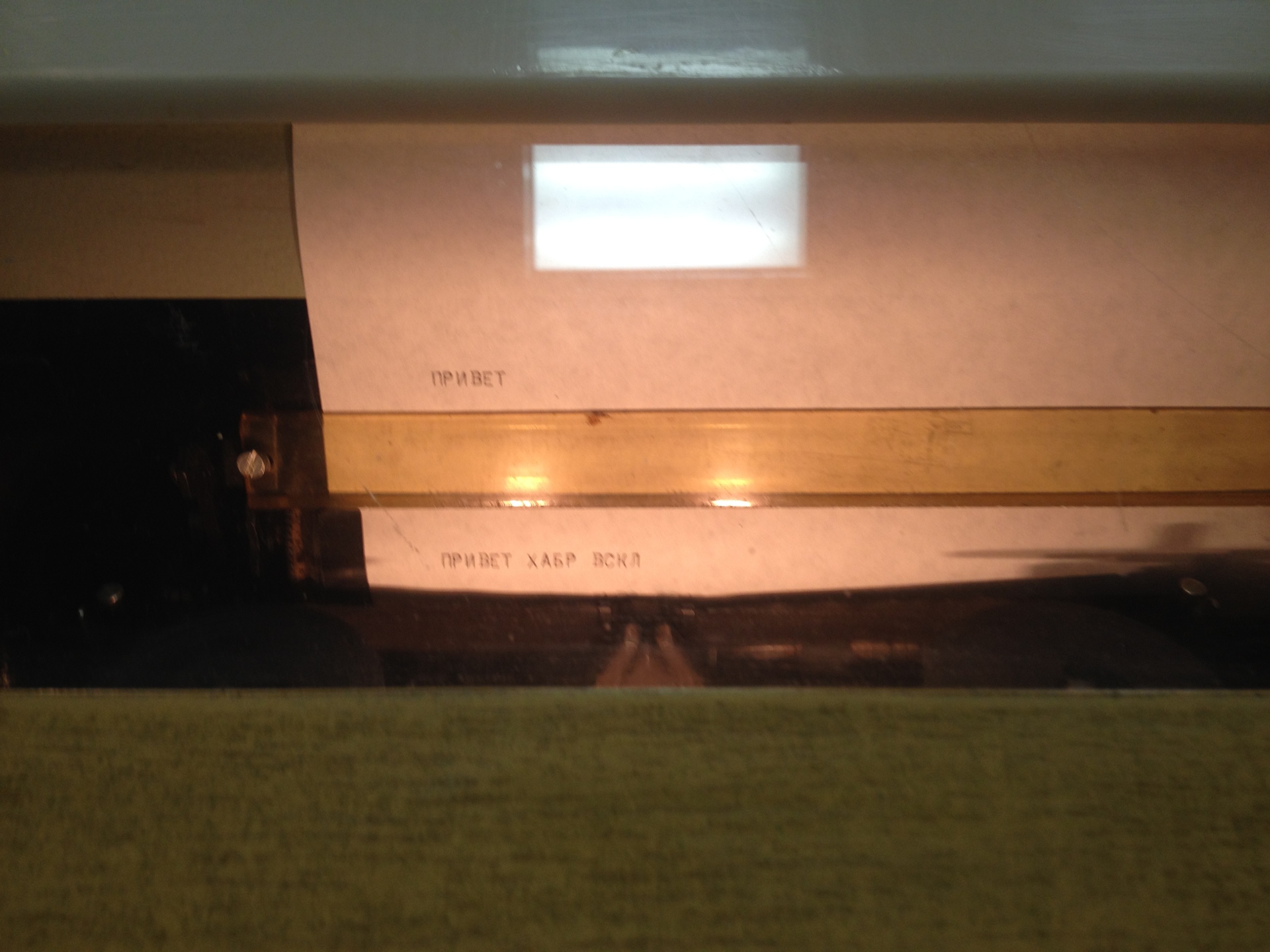
And here, by the way, telex, for which Olga Shelest herself worked.)

And this is an old telex with an interesting keyboard with three registers and two shifty on the keyboard.
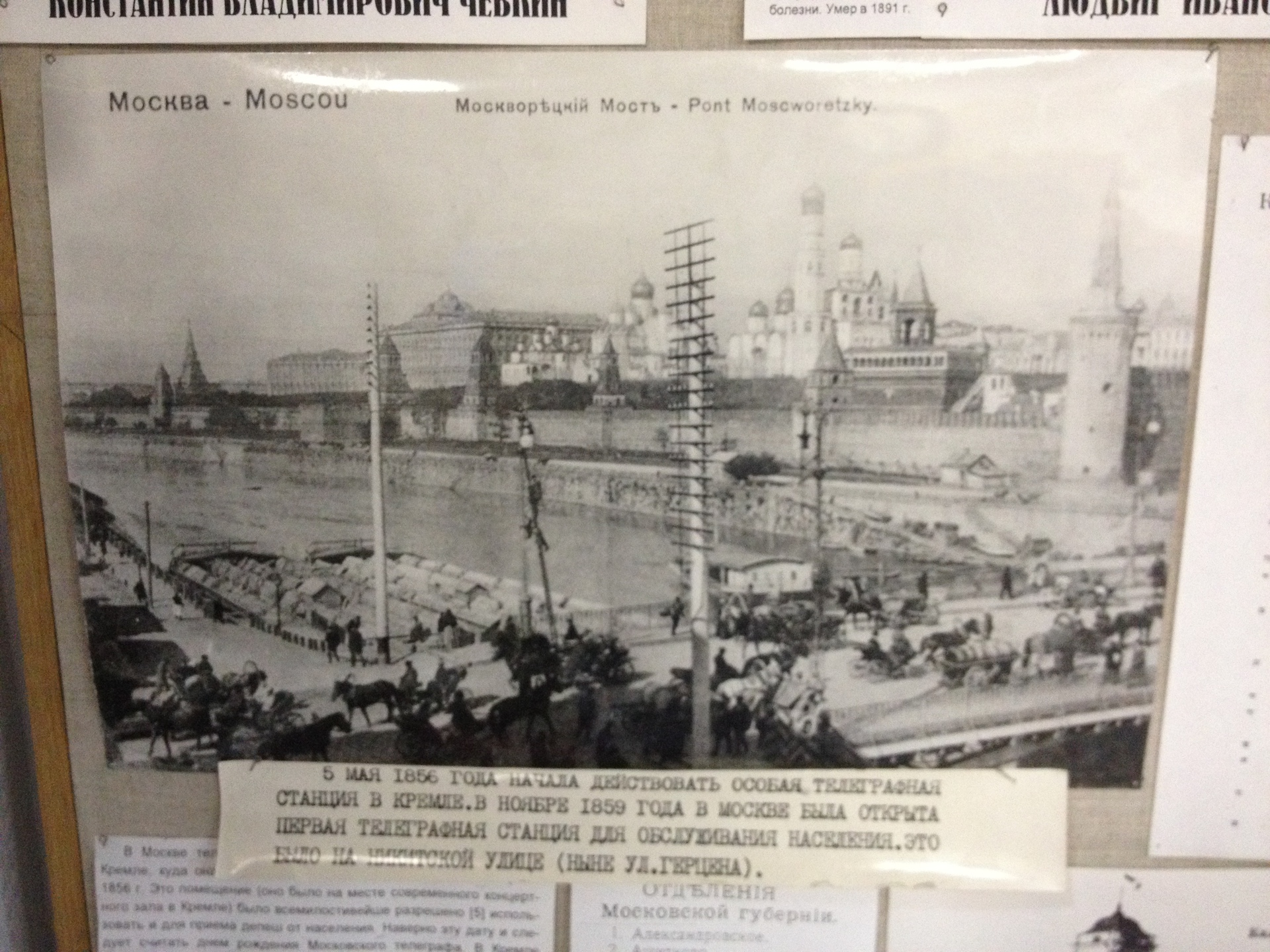


A bit of history.

By the way, the first relay of the first PBX in Moscow, 1930.
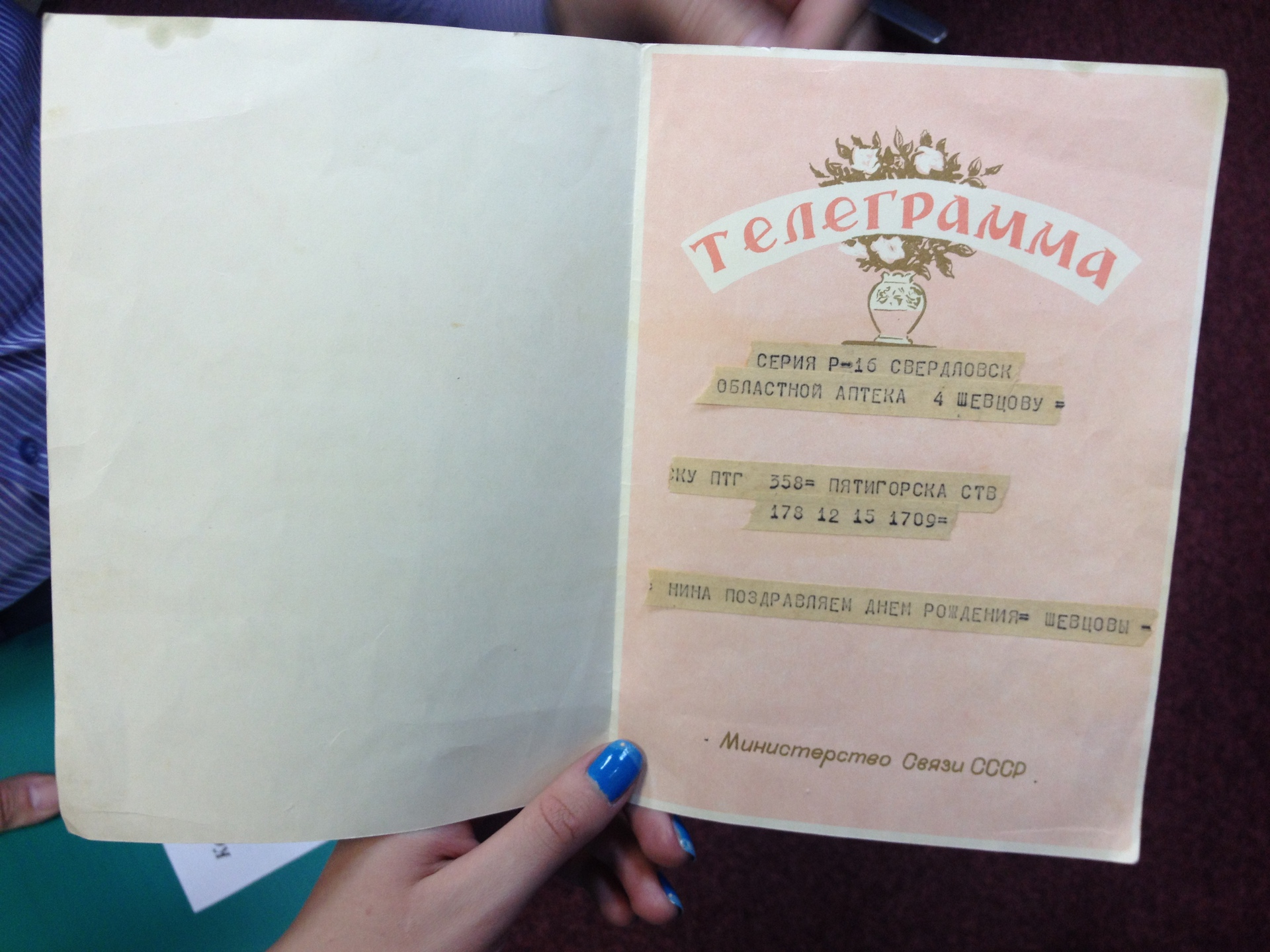
And here is the most interesting. By law, all telegrams must be destroyed after three months of storage in order to ensure the secrecy of correspondence, therefore they are almost not preserved at all. But the museum has a collection of pre-revolutionary telegrams seized by censorship (only their photographs were shown to us). Reading them, you understand how naive our society was just a hundred years ago. On the other hand, there is no difference with today's twitter.
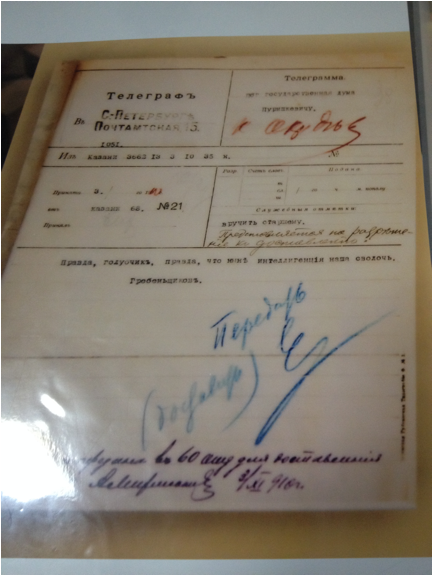
“Our intelligentsia is a bastard!”
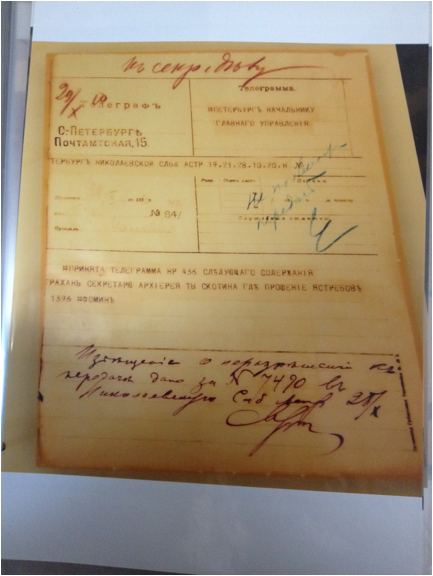
"You cattle, where is the petition?"
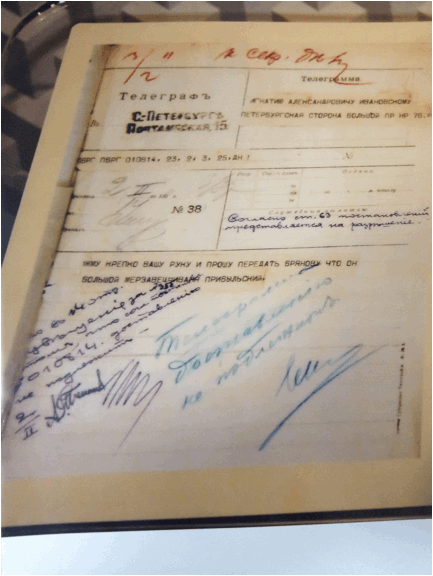
"Big Bastard"

"Curse the newlyweds"
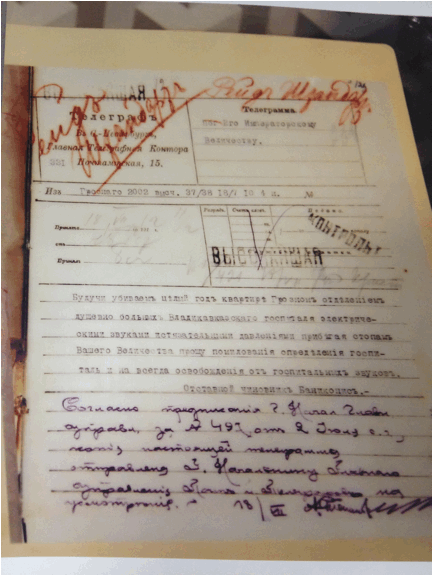
"Torment electric sounds." Classic!
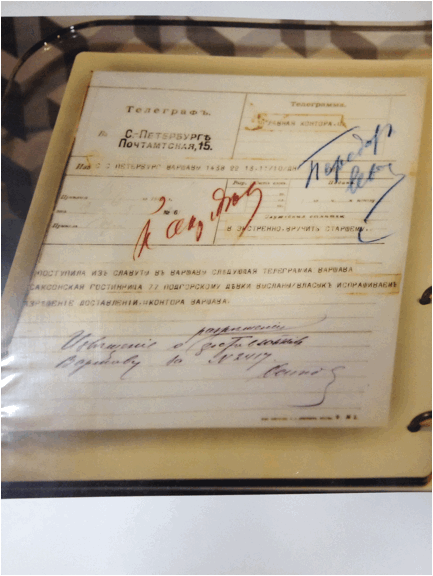
"Podgorsky girls sent"

"Christ is Risen - the treasury is empty." Tell the emperor that the British do not clean their guns with bricks.
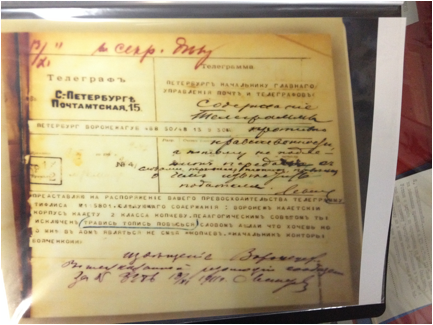
"Fuck, drown, hang!"
But a monument to our waste. The last remaining section of the clock above the entrance to the telegraph. Vladimir just picked up the section in the garbage and restored it.
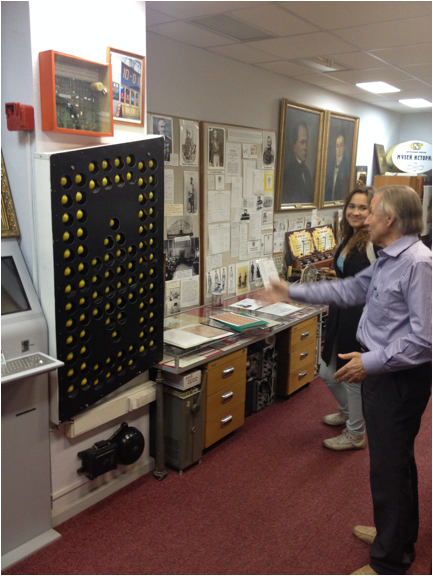
I had to restore and control circuit. But the firefighters, who know the museum and the enthusiasm of Vladimir Tsukor, are therefore strictly forbidden to turn on the device, so they give (or do not give) permission for each electrical device.
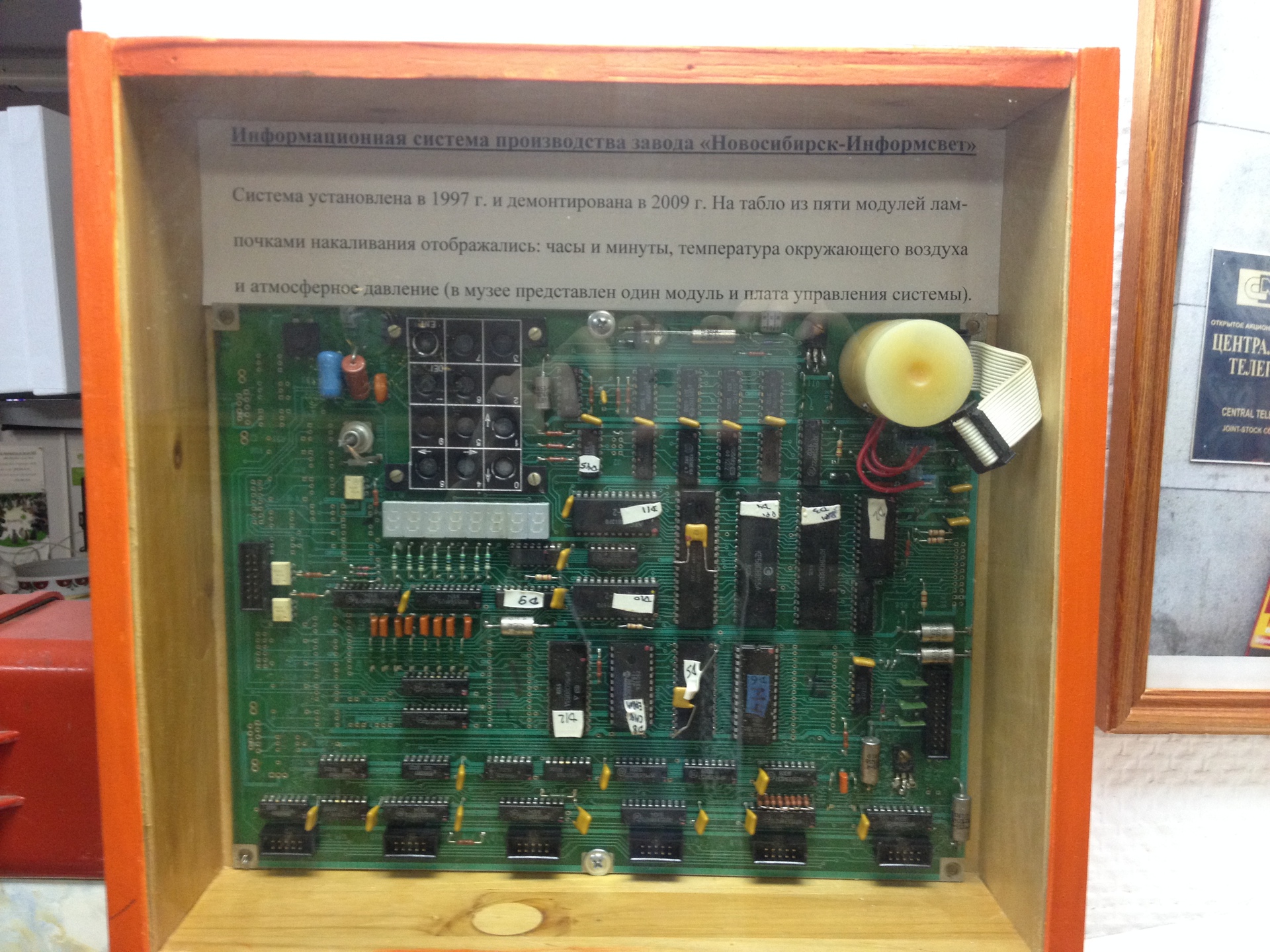
Just imagine how much this watch would be worth now, put it up for auction. And they were not even stolen, but simply thrown into the garbage.
That's all! Thanks to the museum director for an interesting excursion, and Albert Valiullin (DI Telegraph) for the invitation.
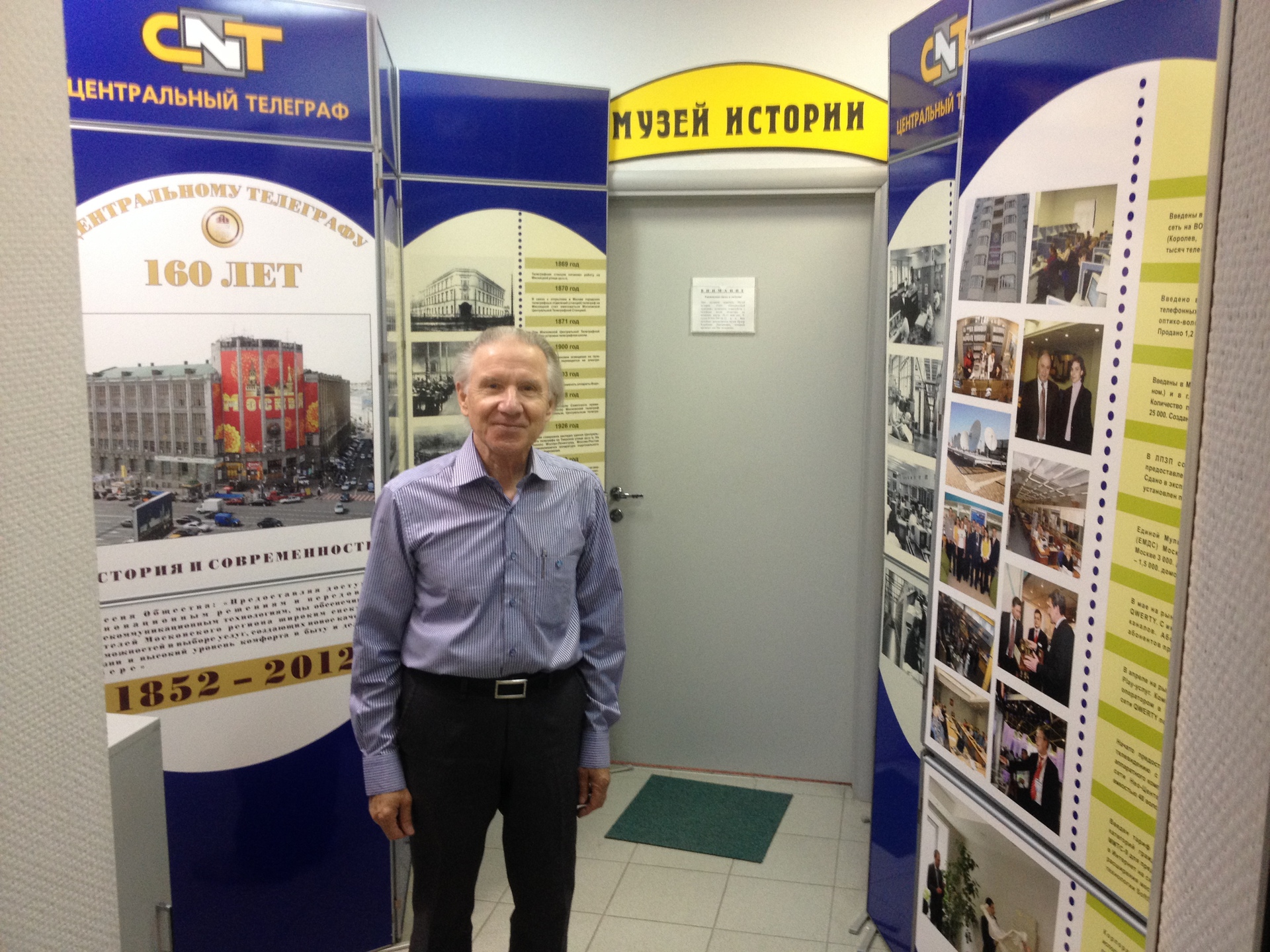
By the way, I told Vladimir about Habré, and he asked to ask a question - would the habrovans want to go on such an excursion? But at a time, more than ten people would not fit in a museum, so Albert suggested that it would be easier to do an exhibition of museum exhibits right in co-working. Do not be lazy to vote!
Source: https://habr.com/ru/post/228589/
All Articles